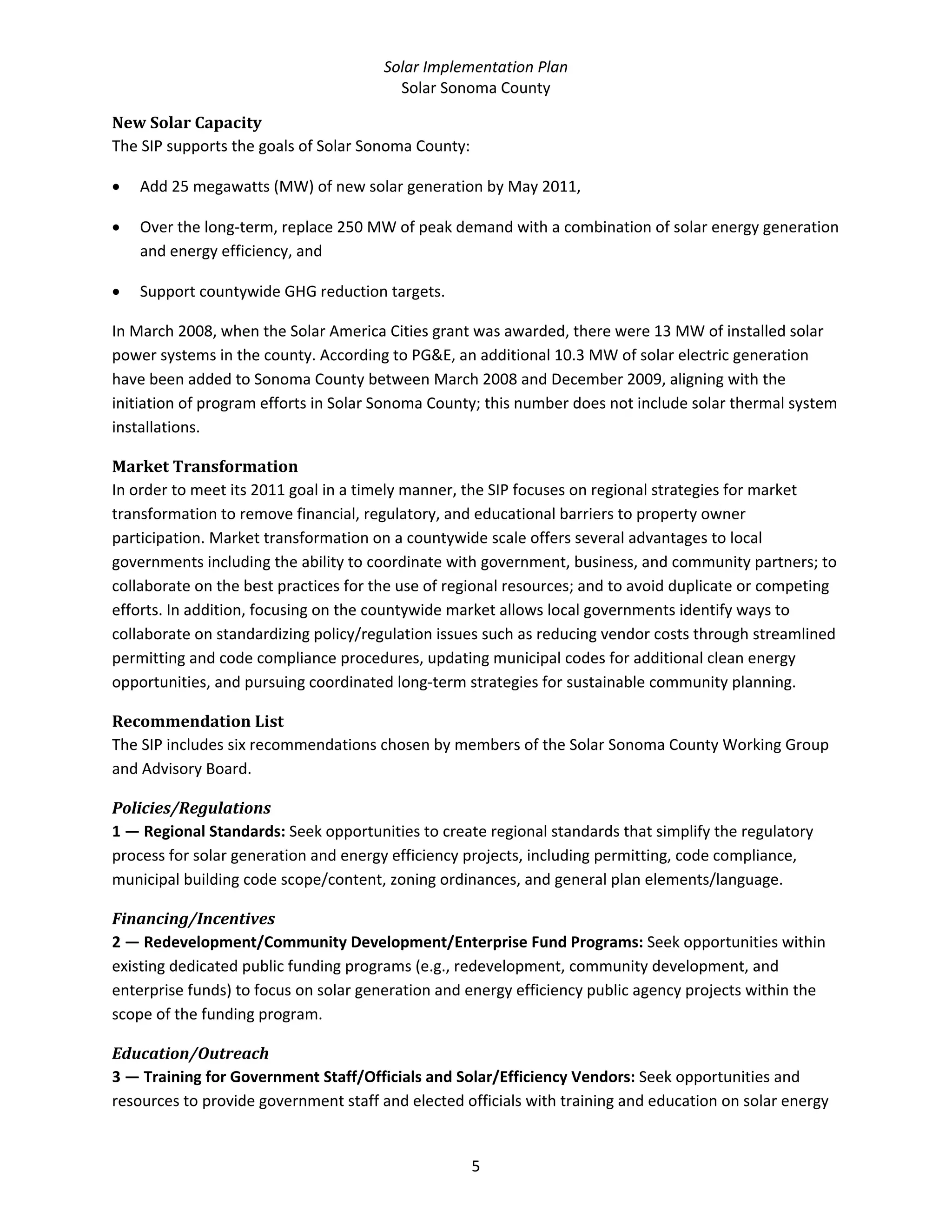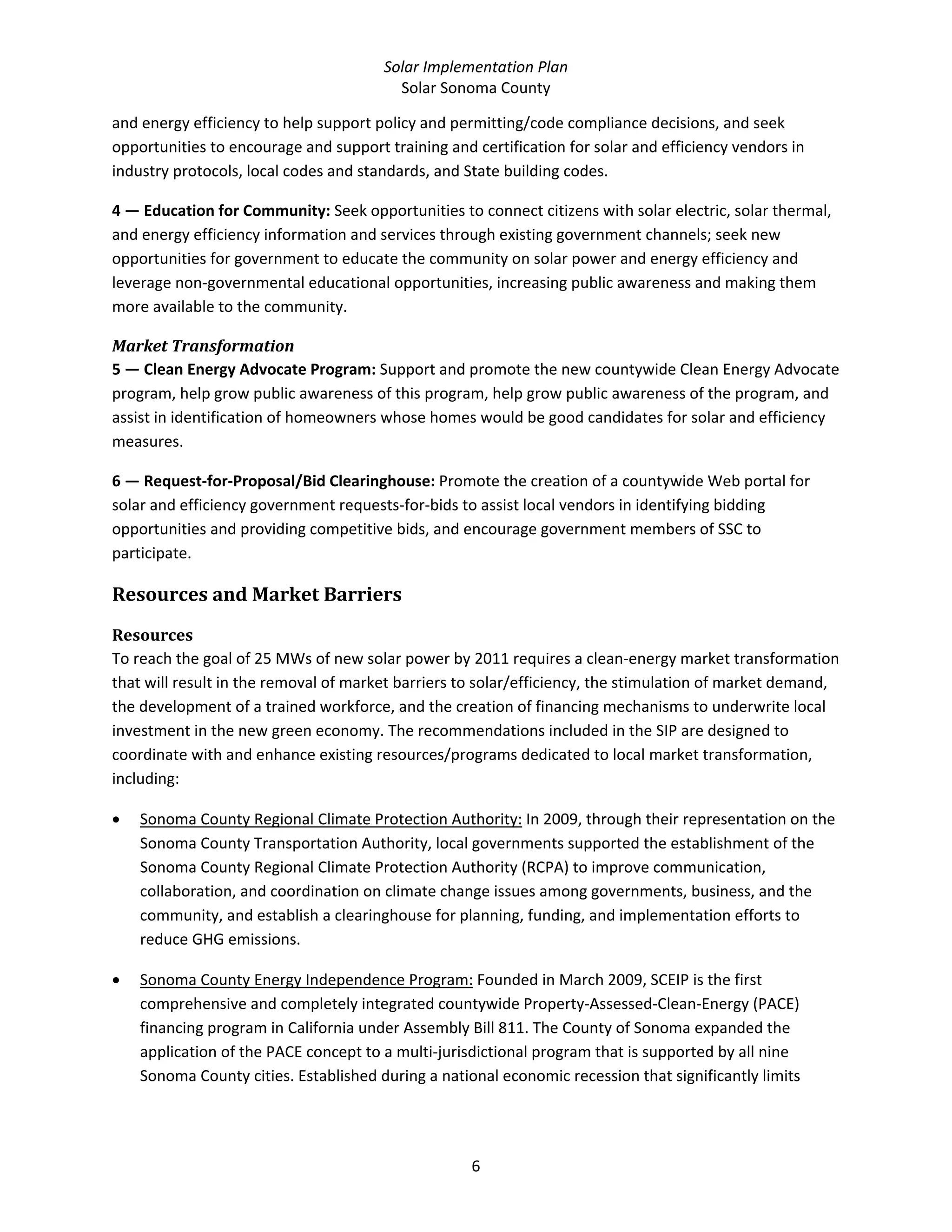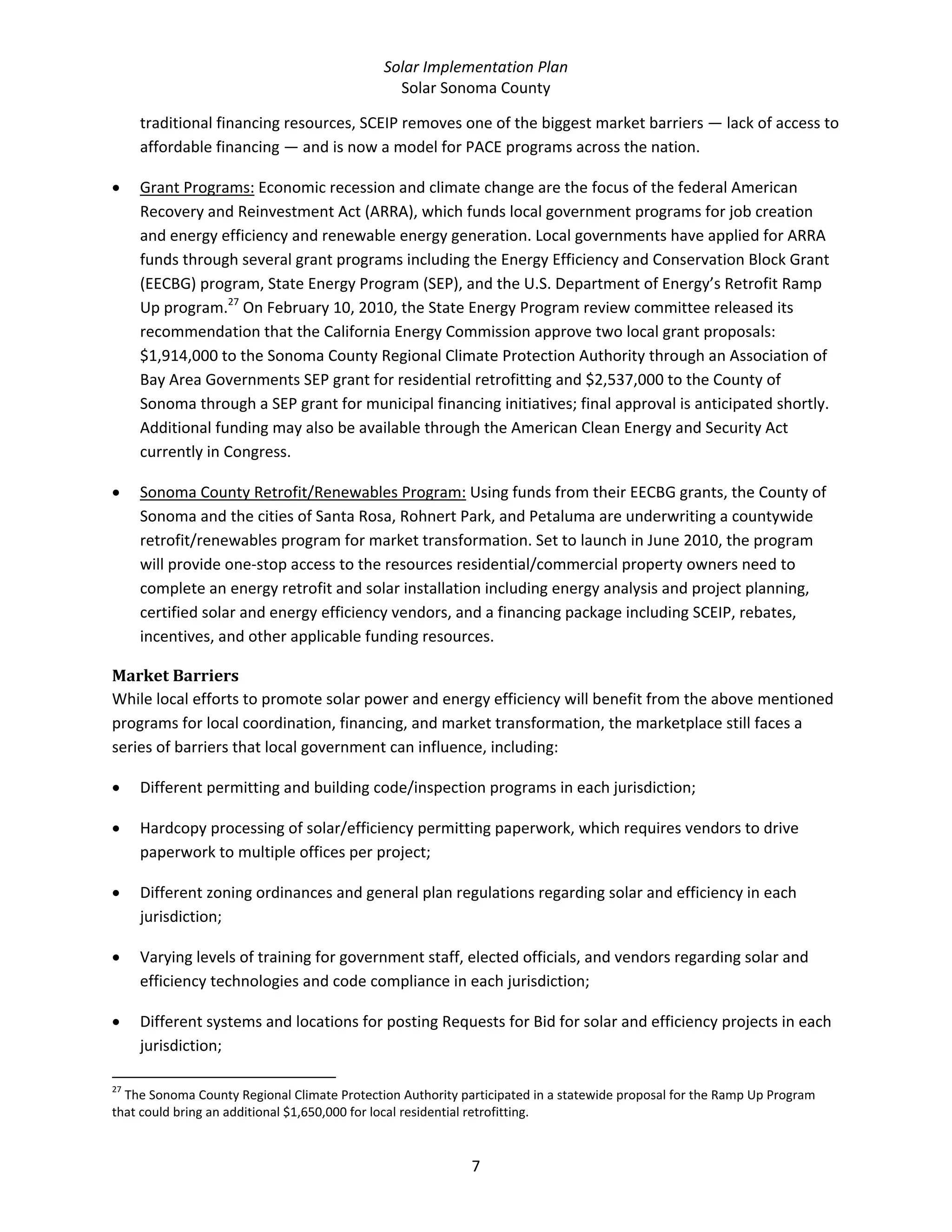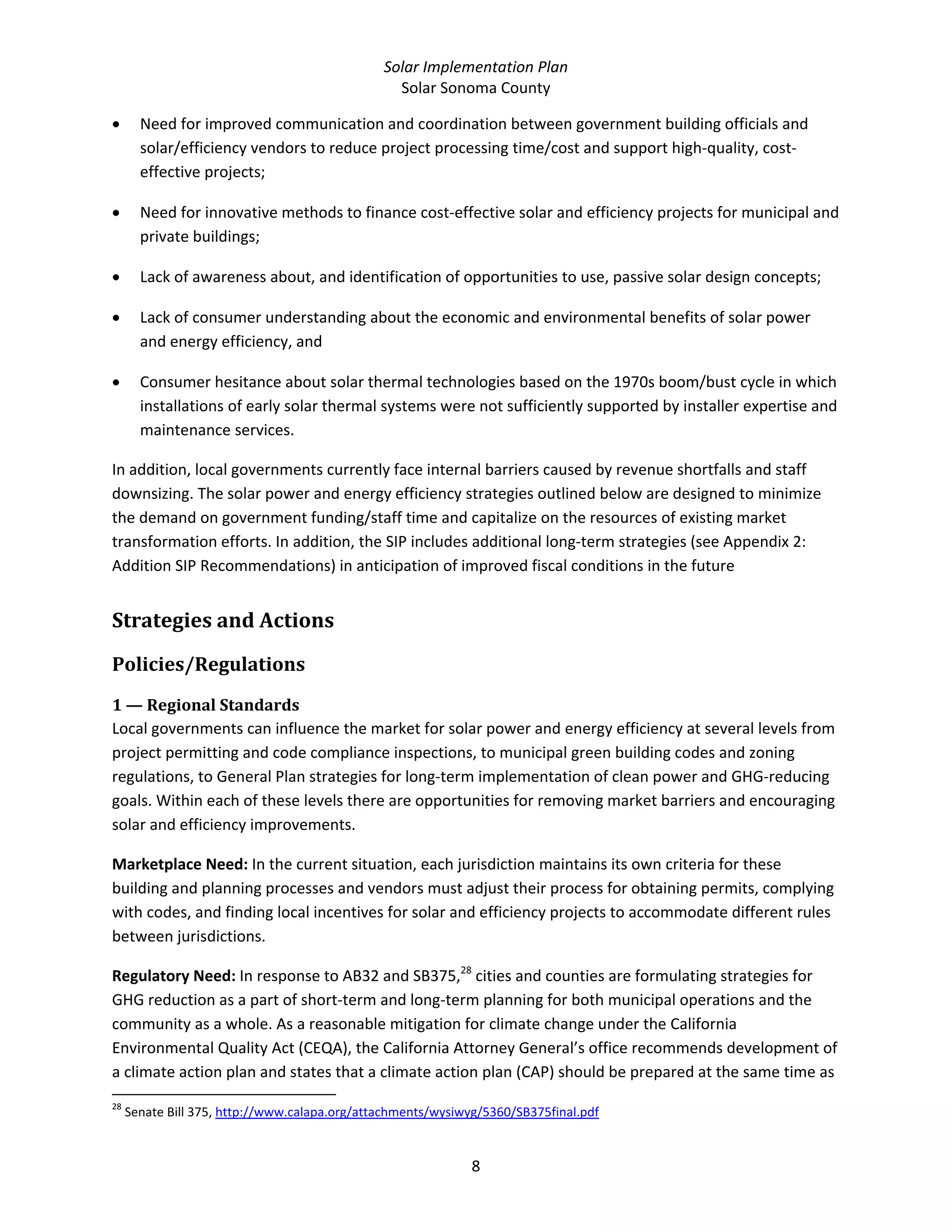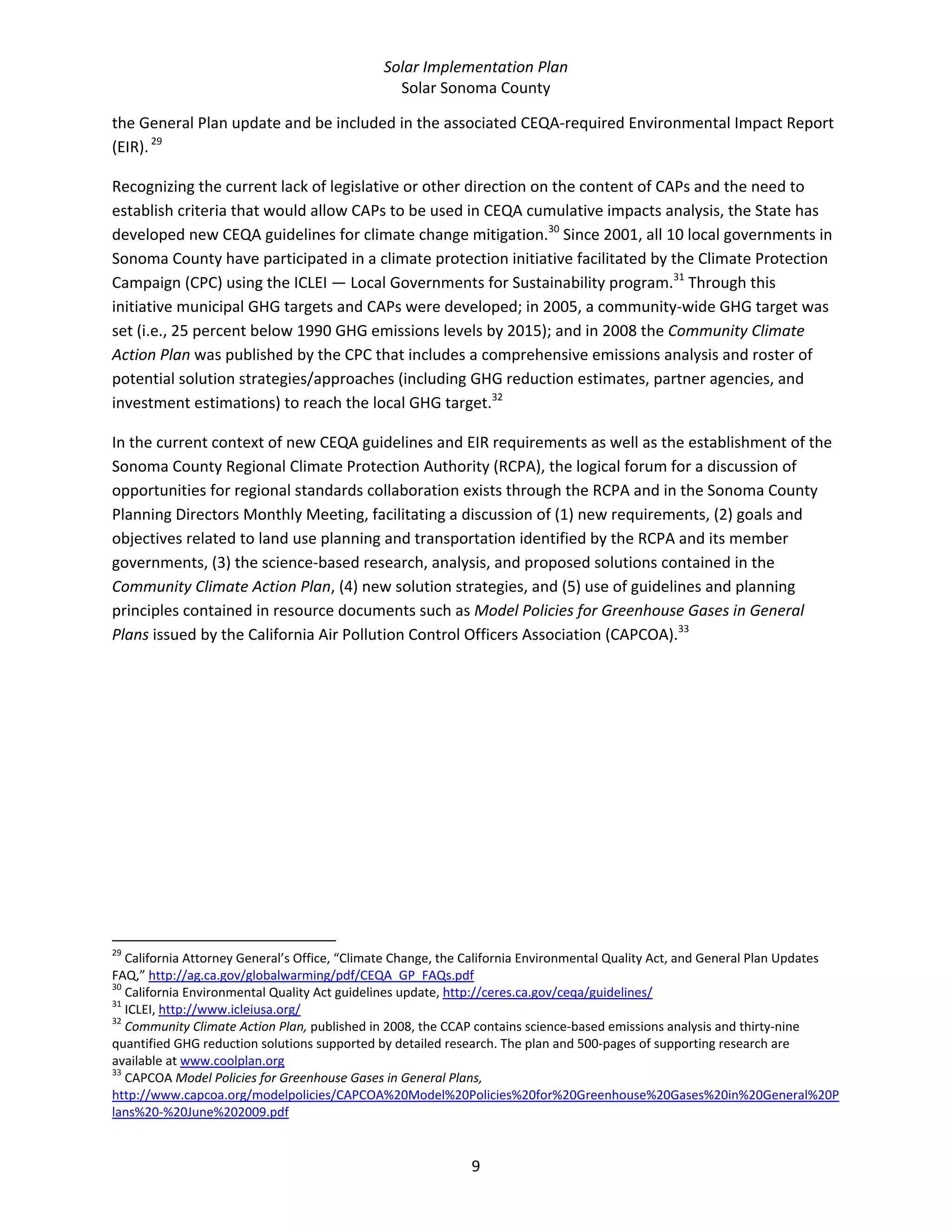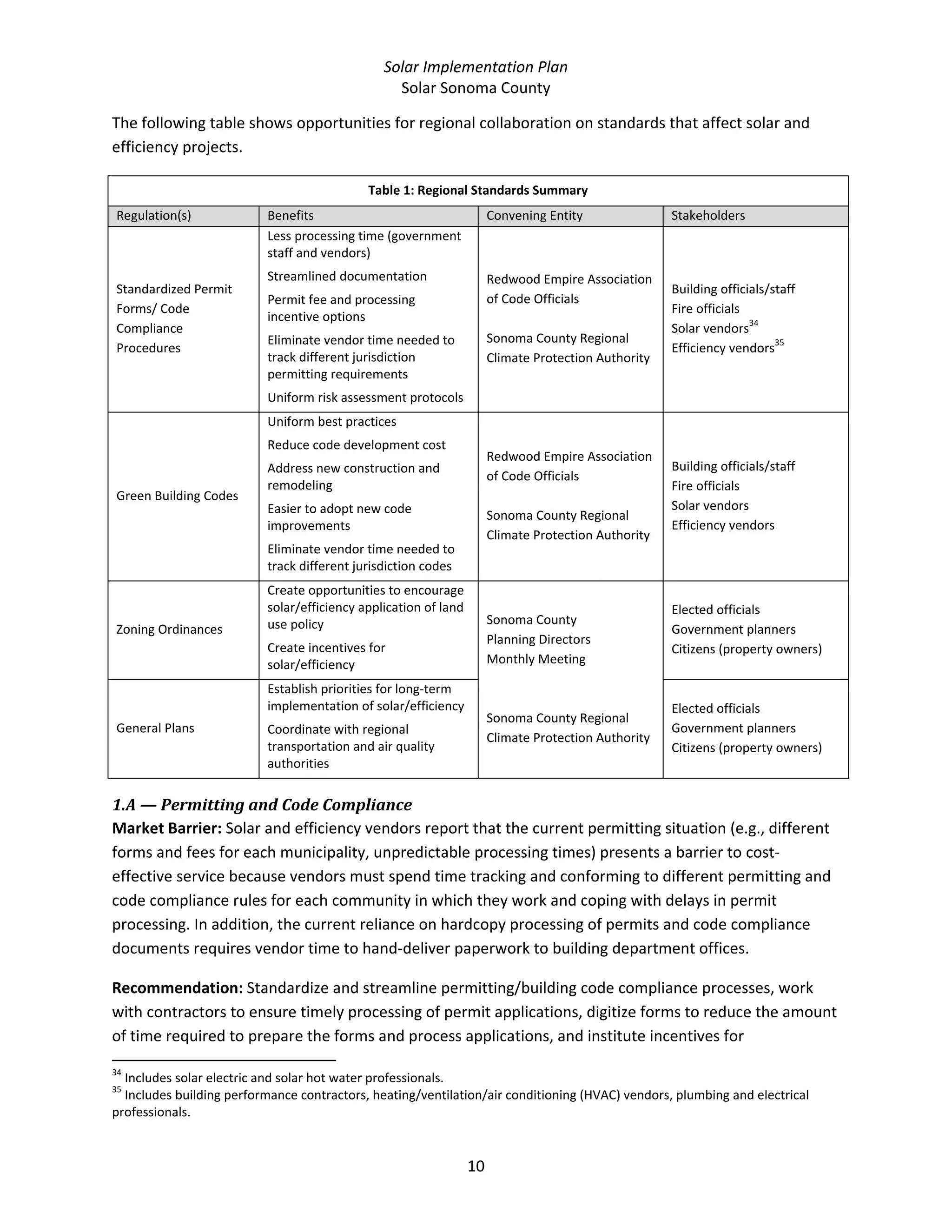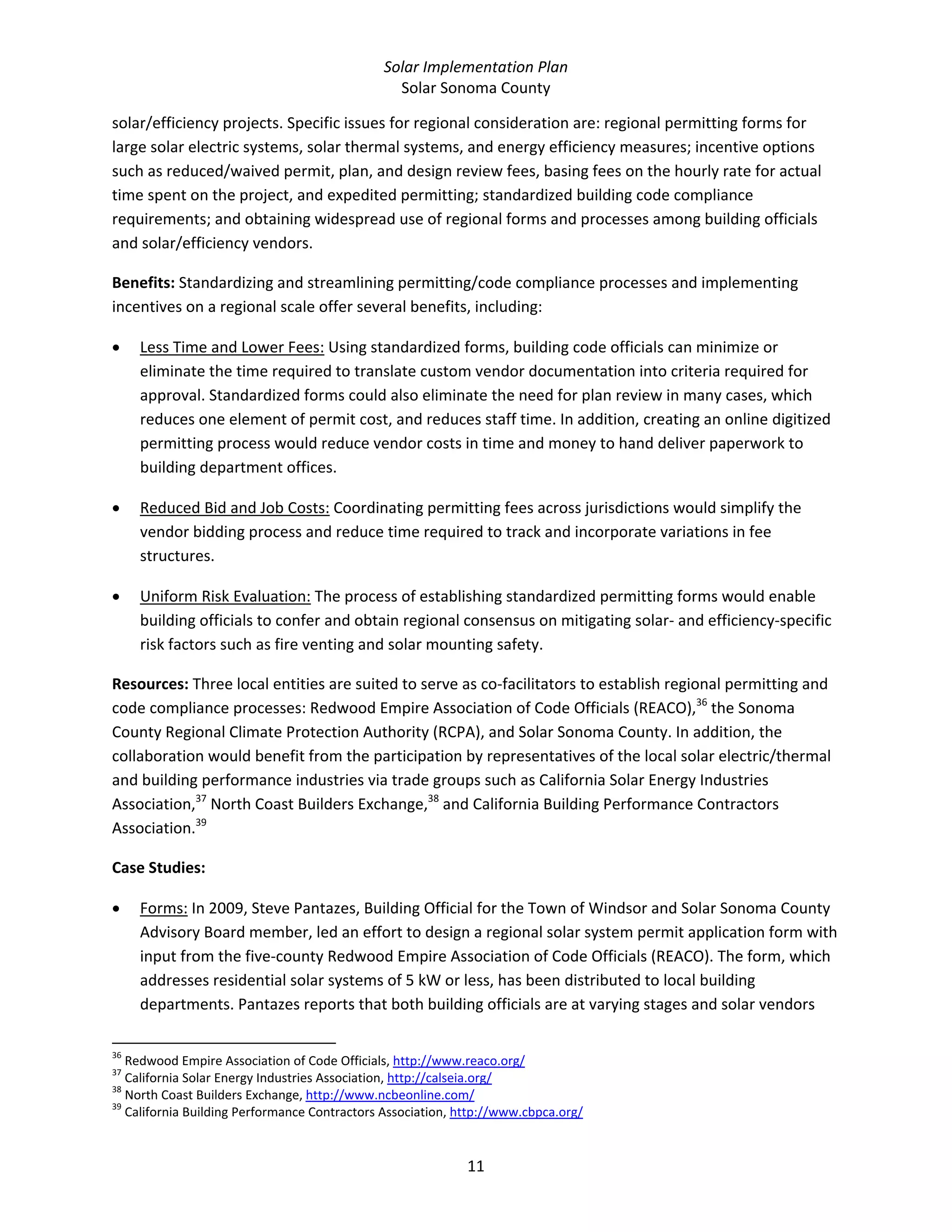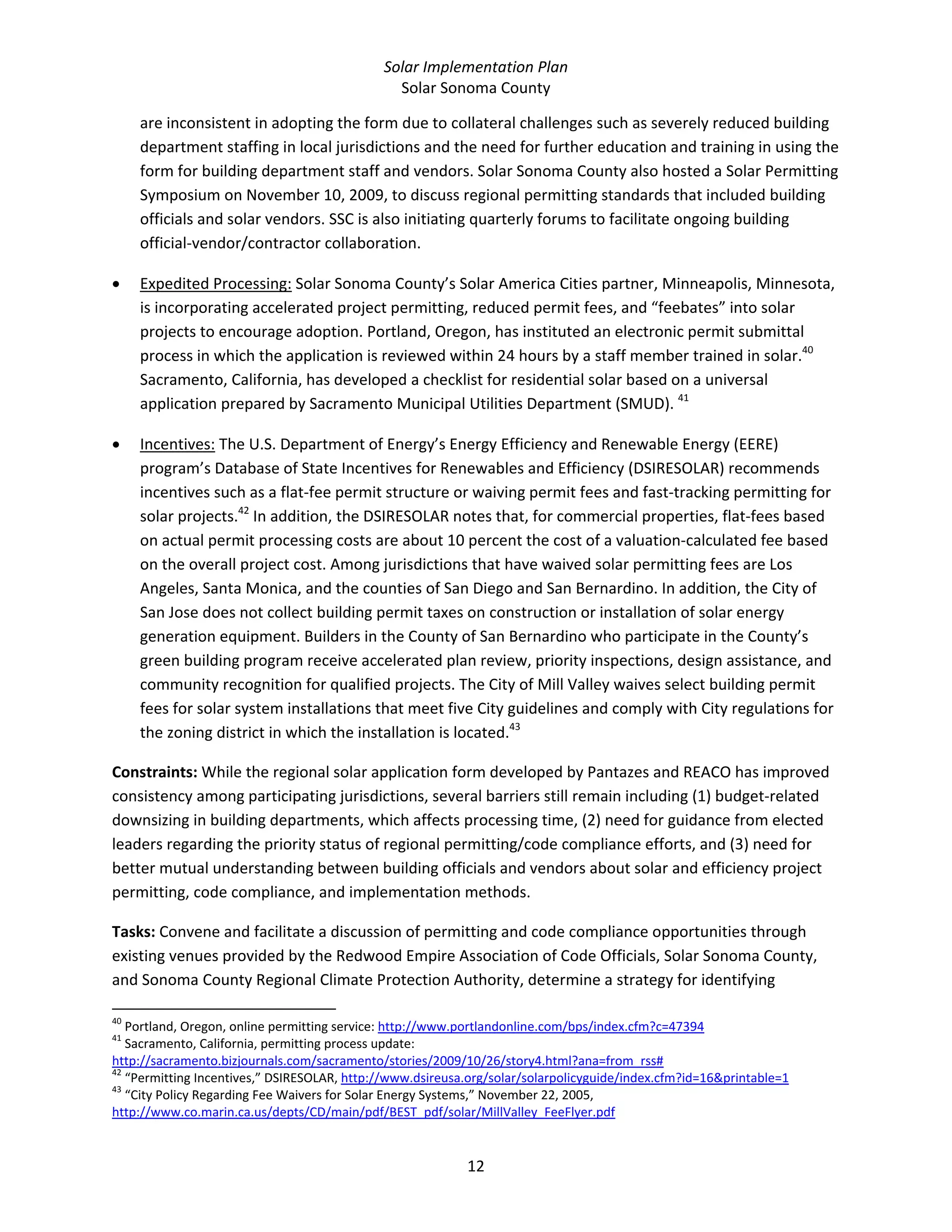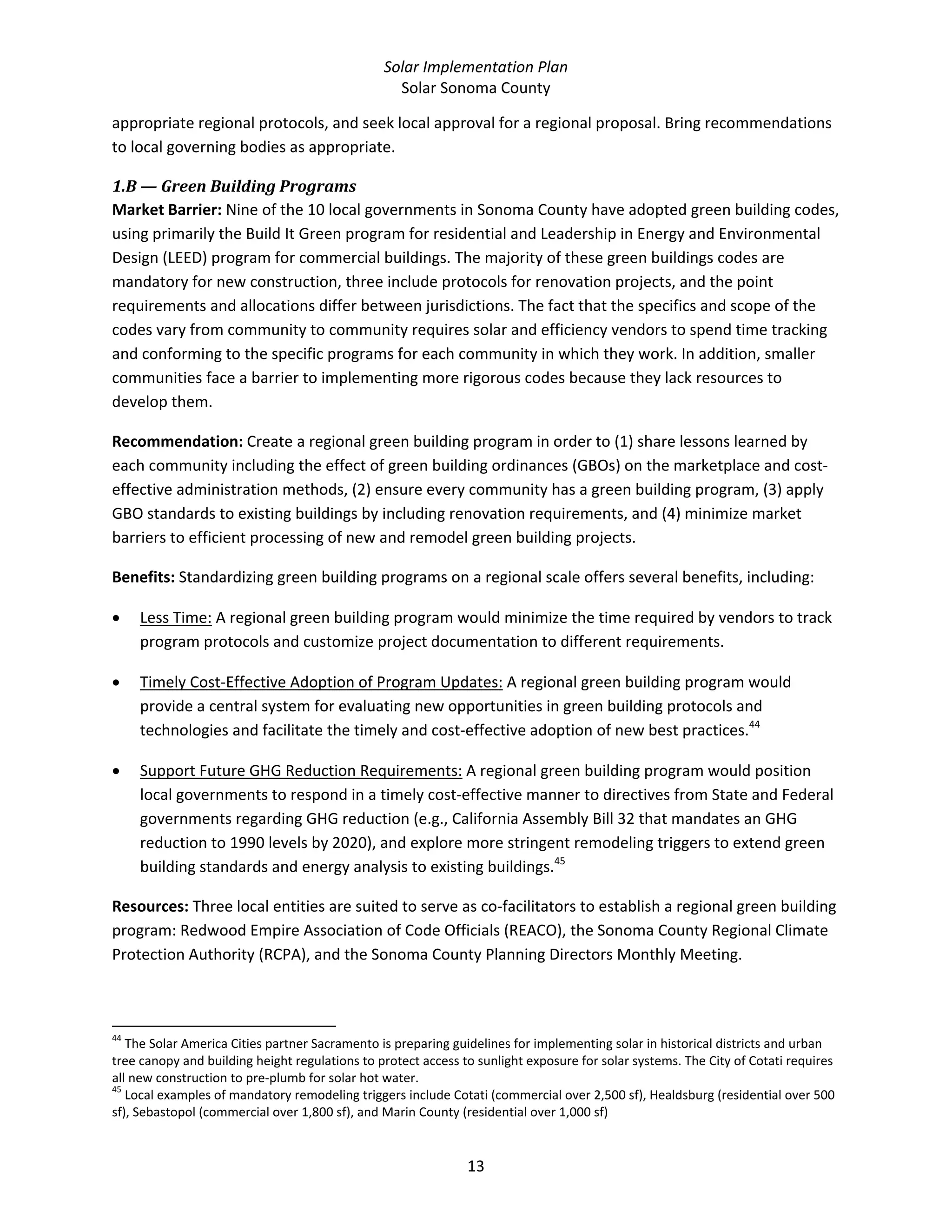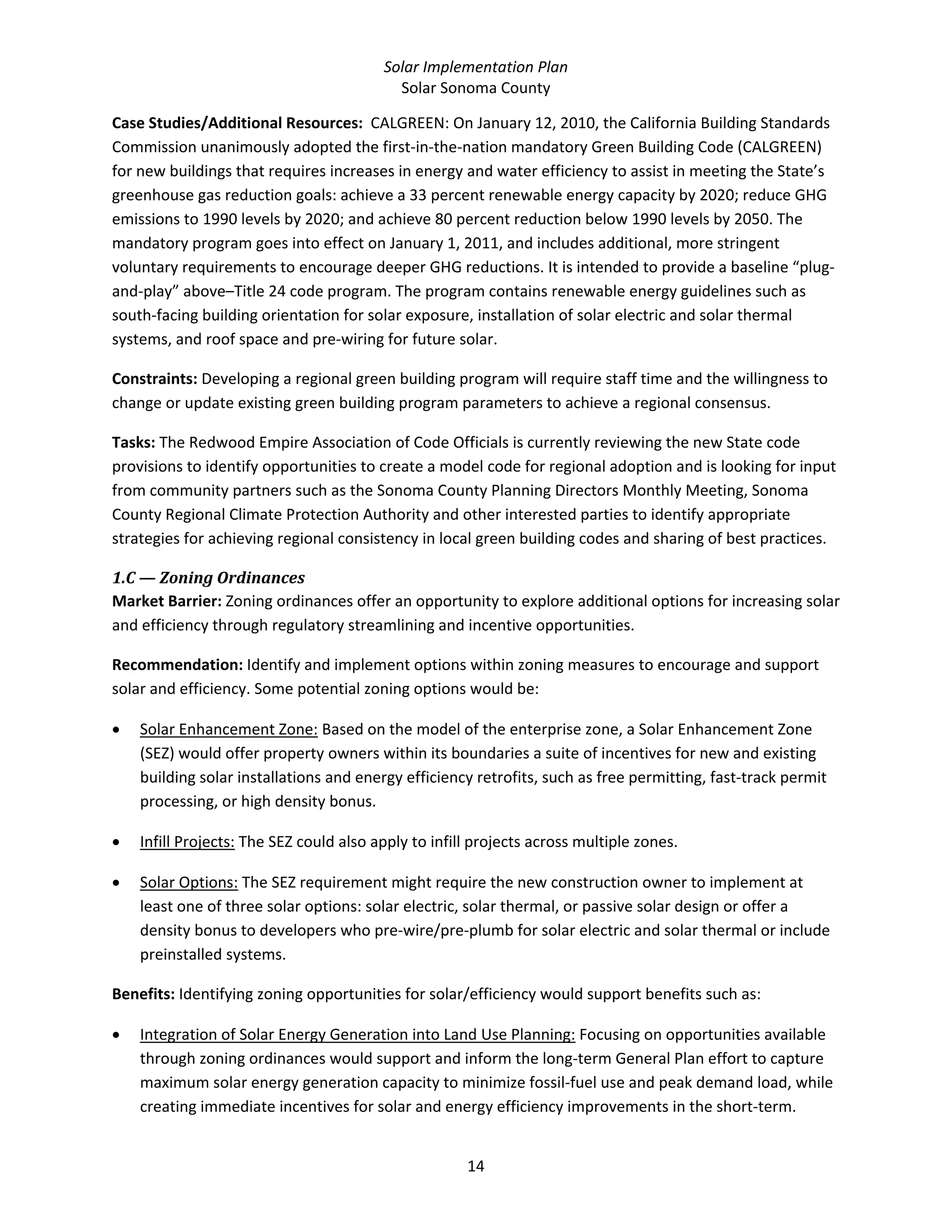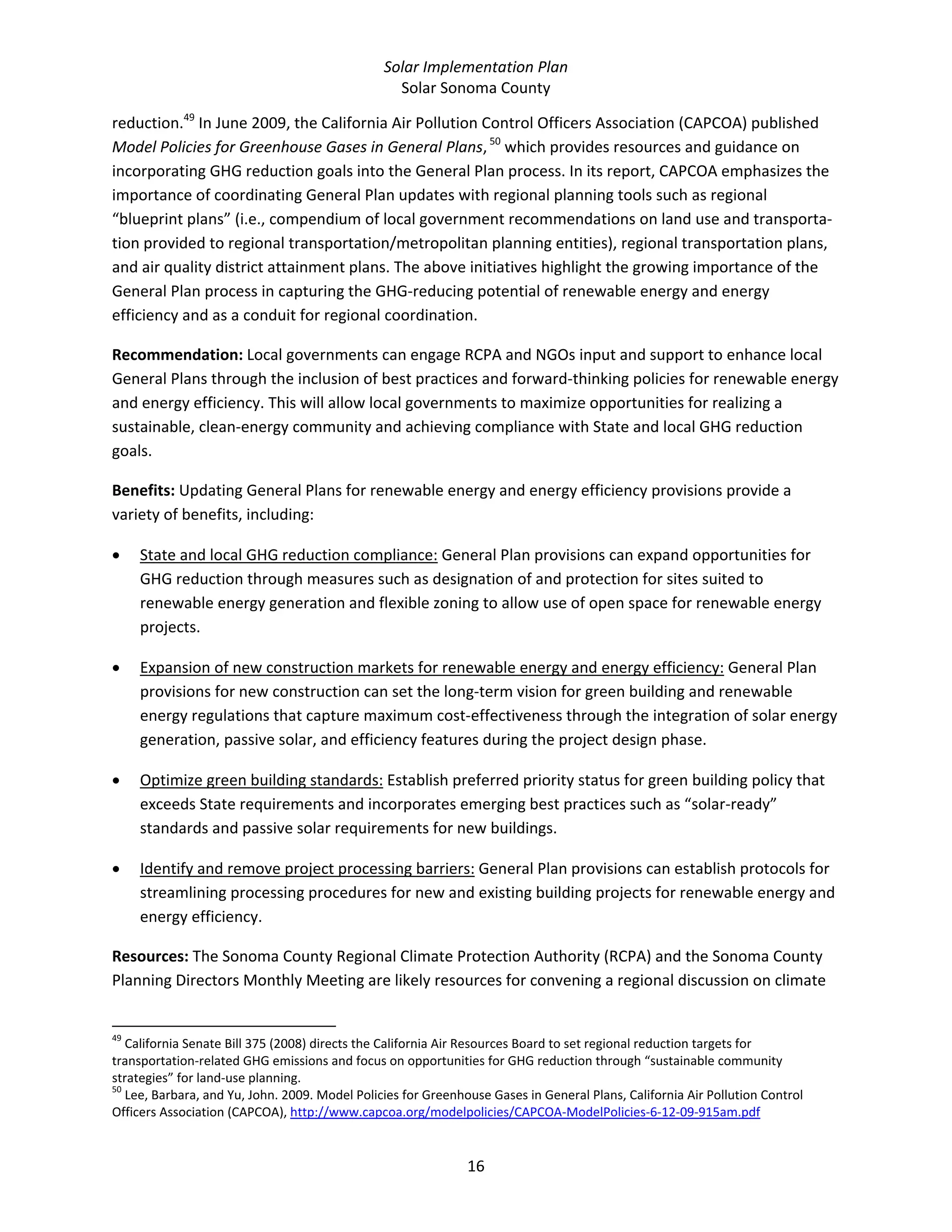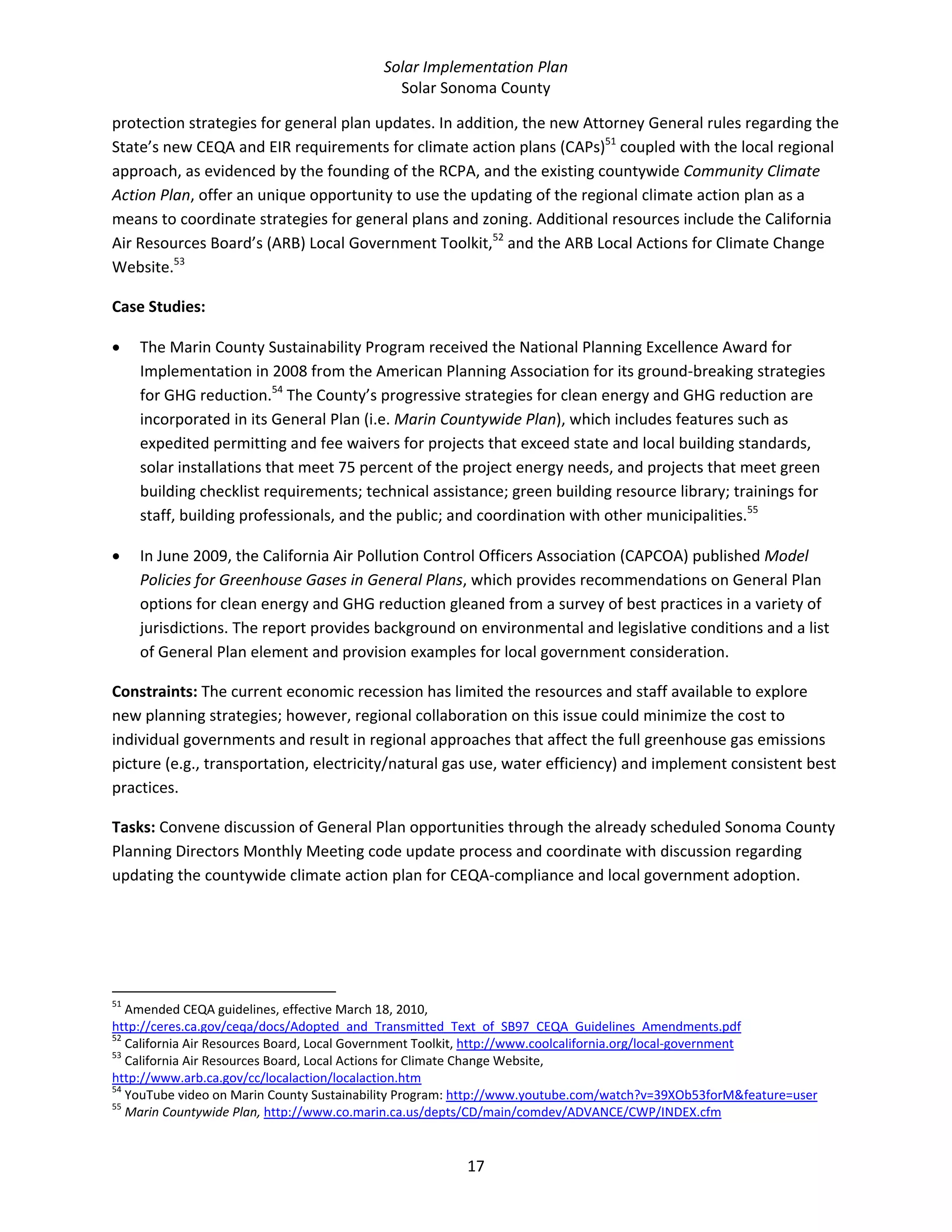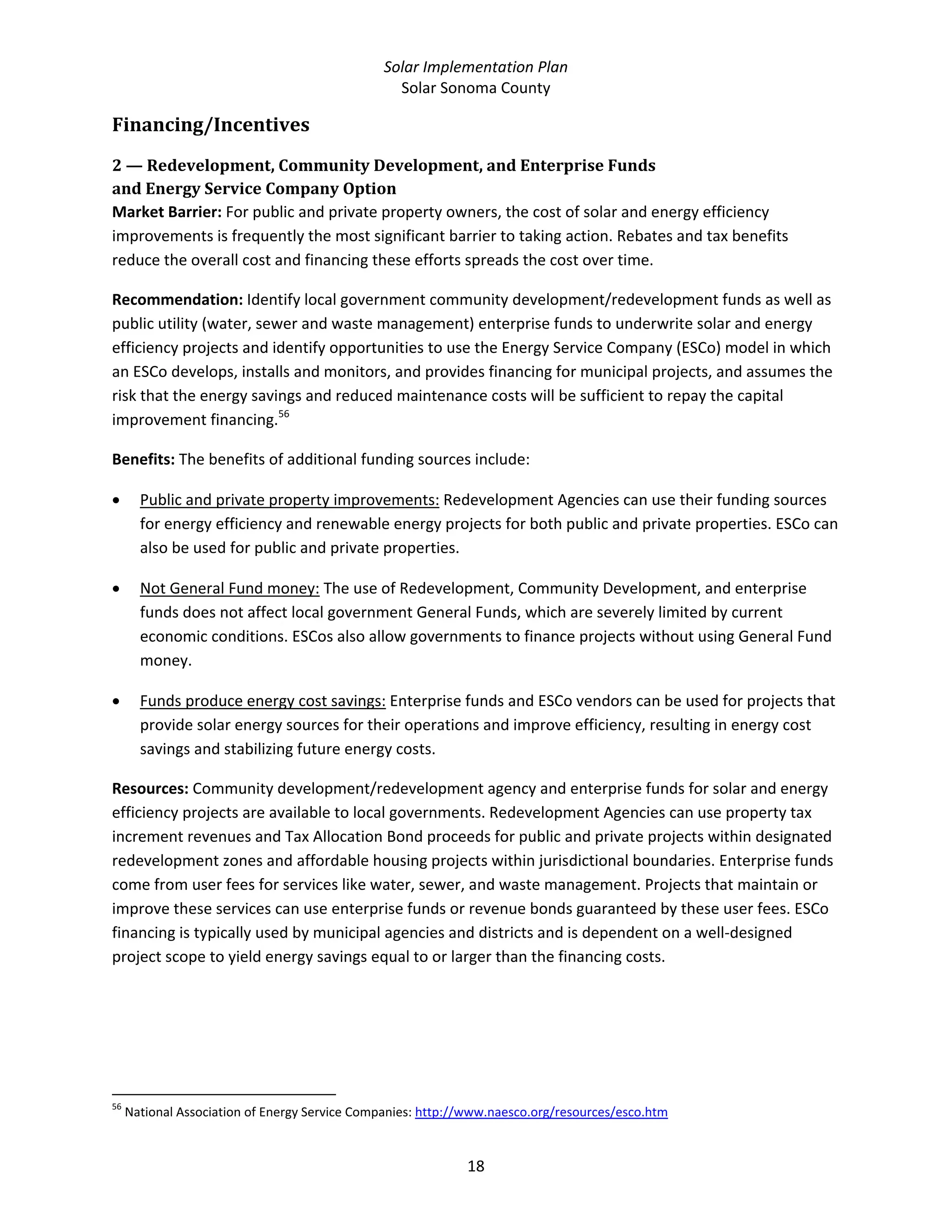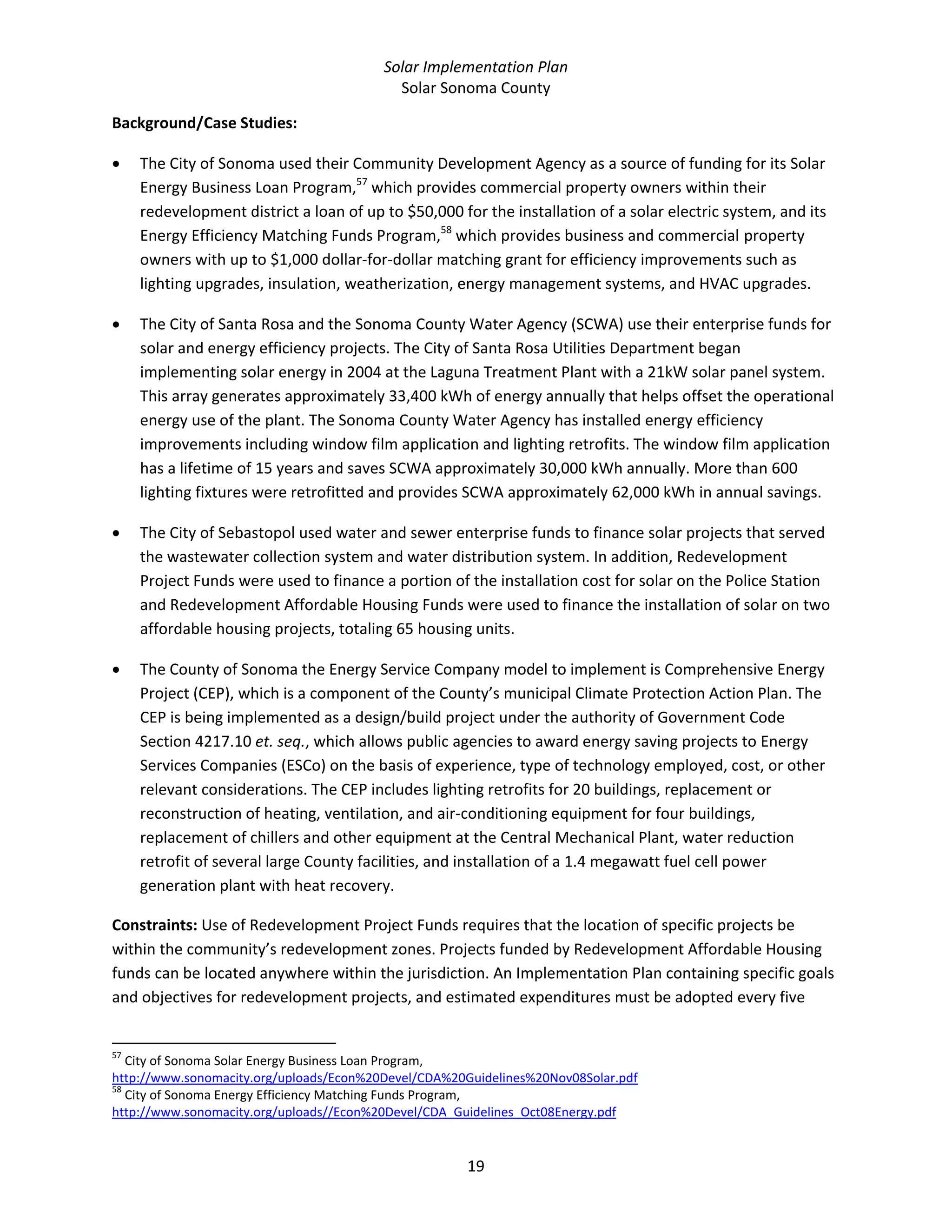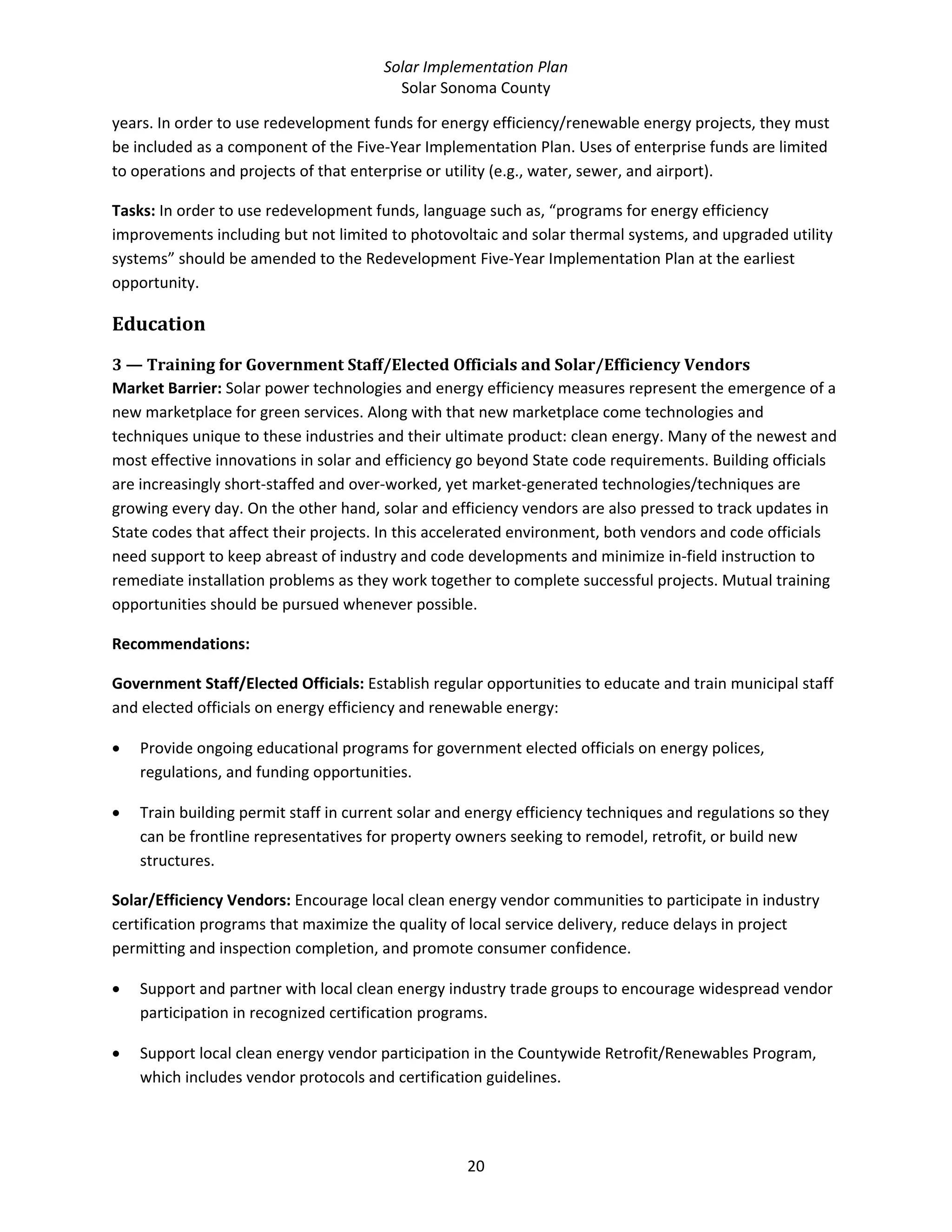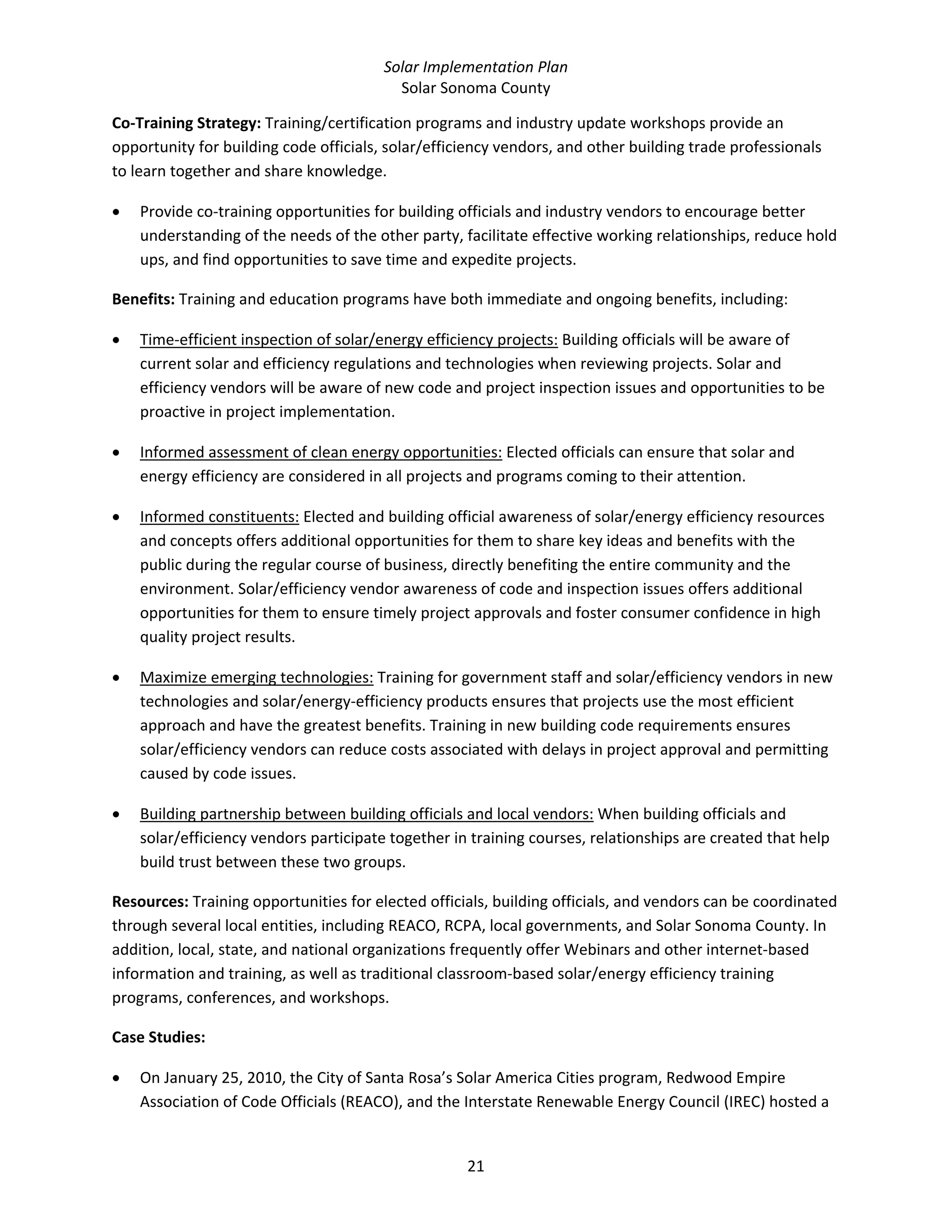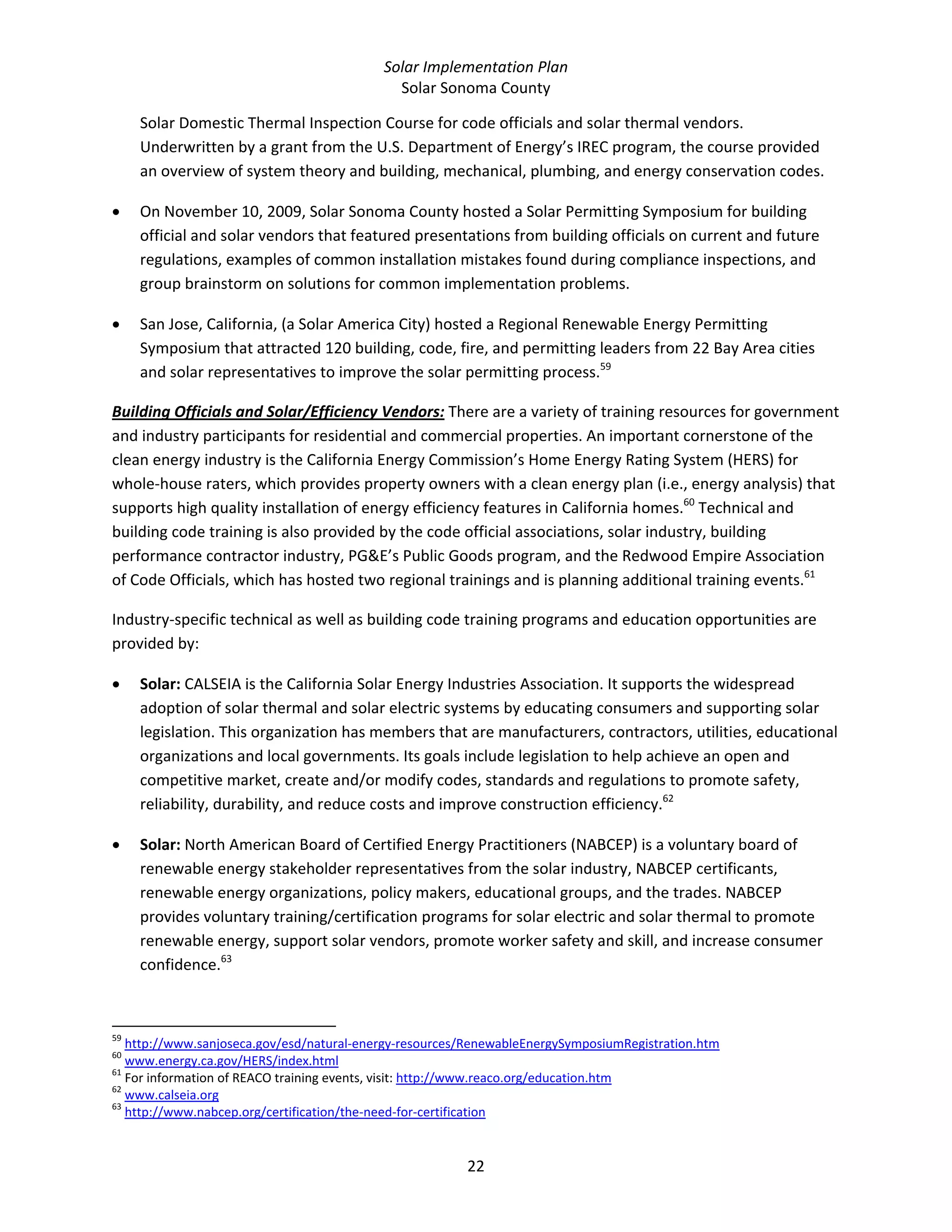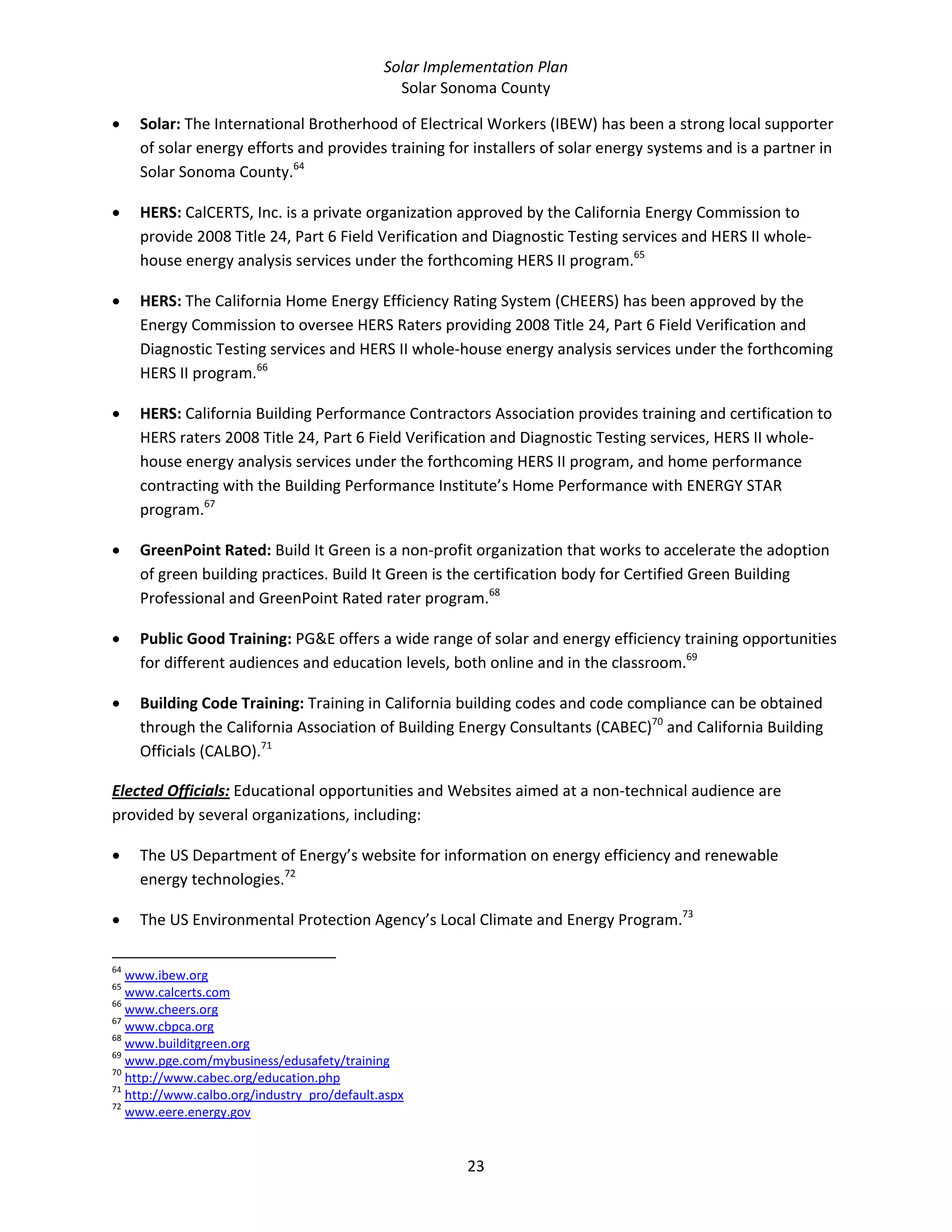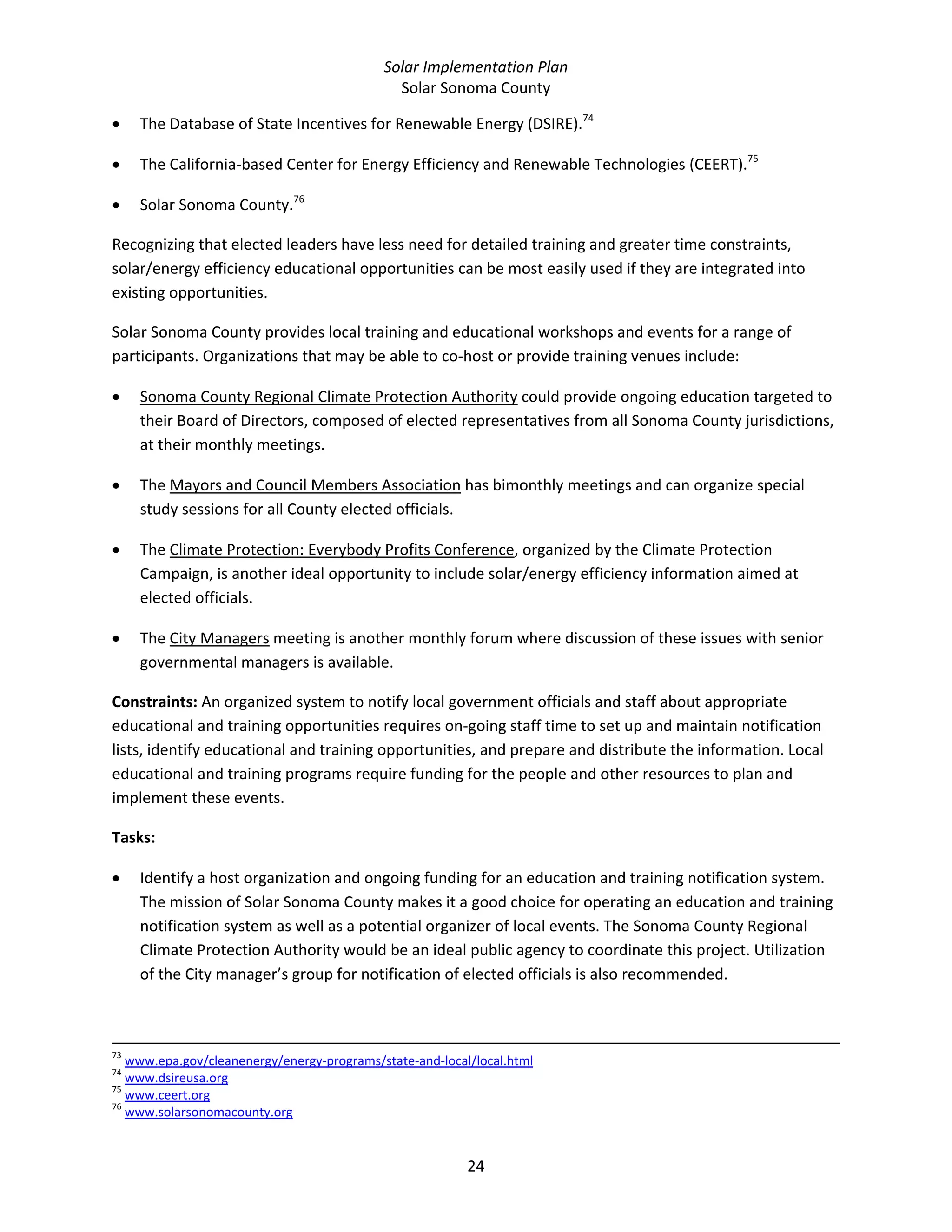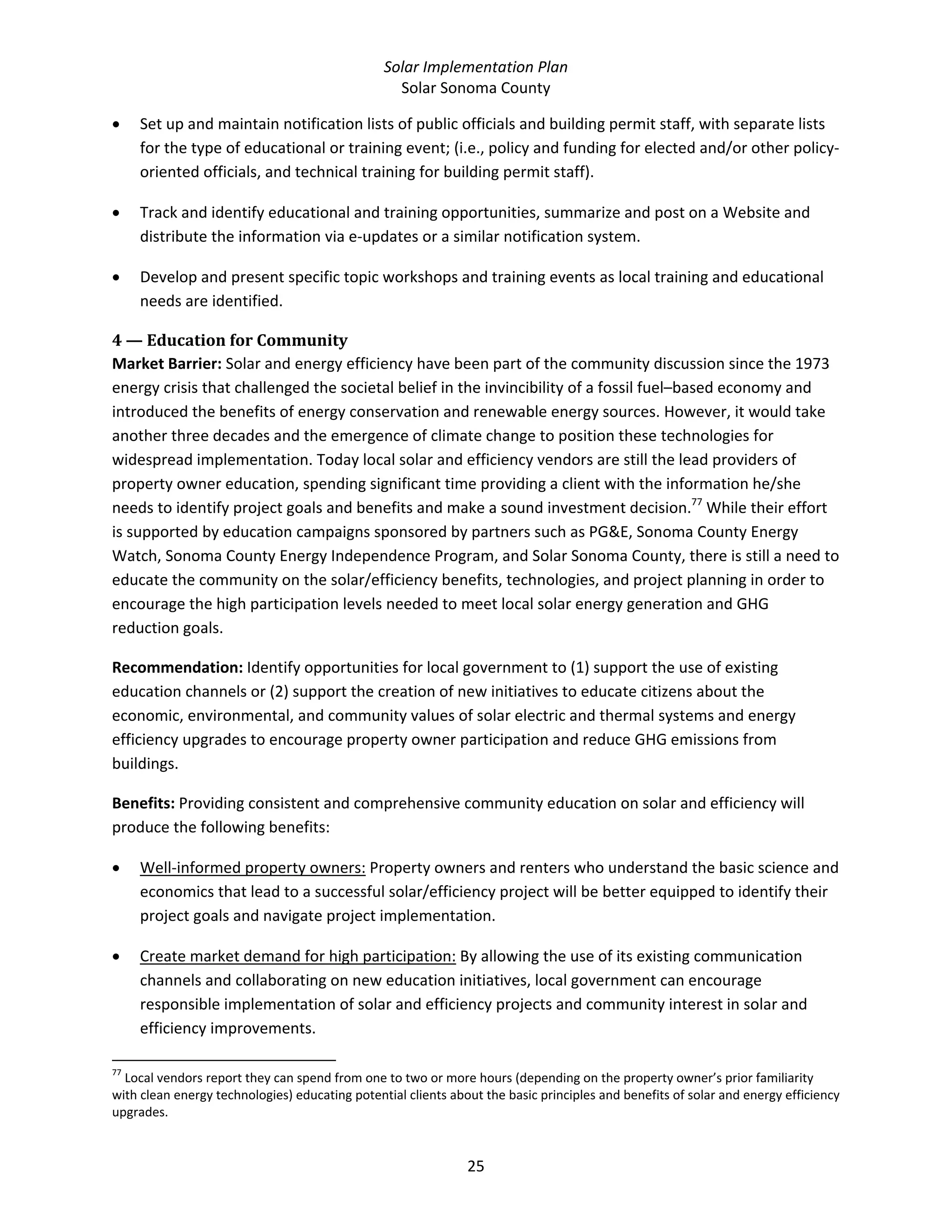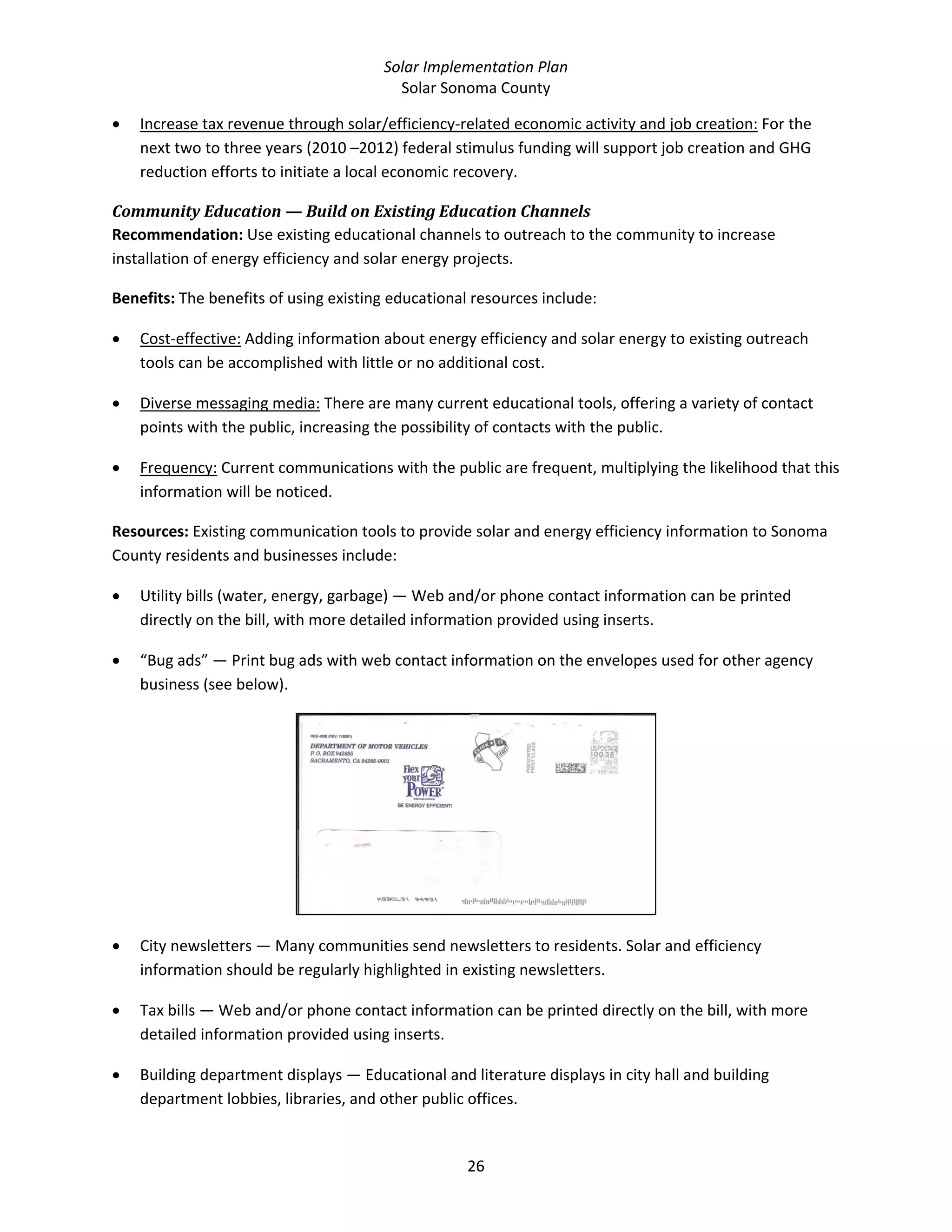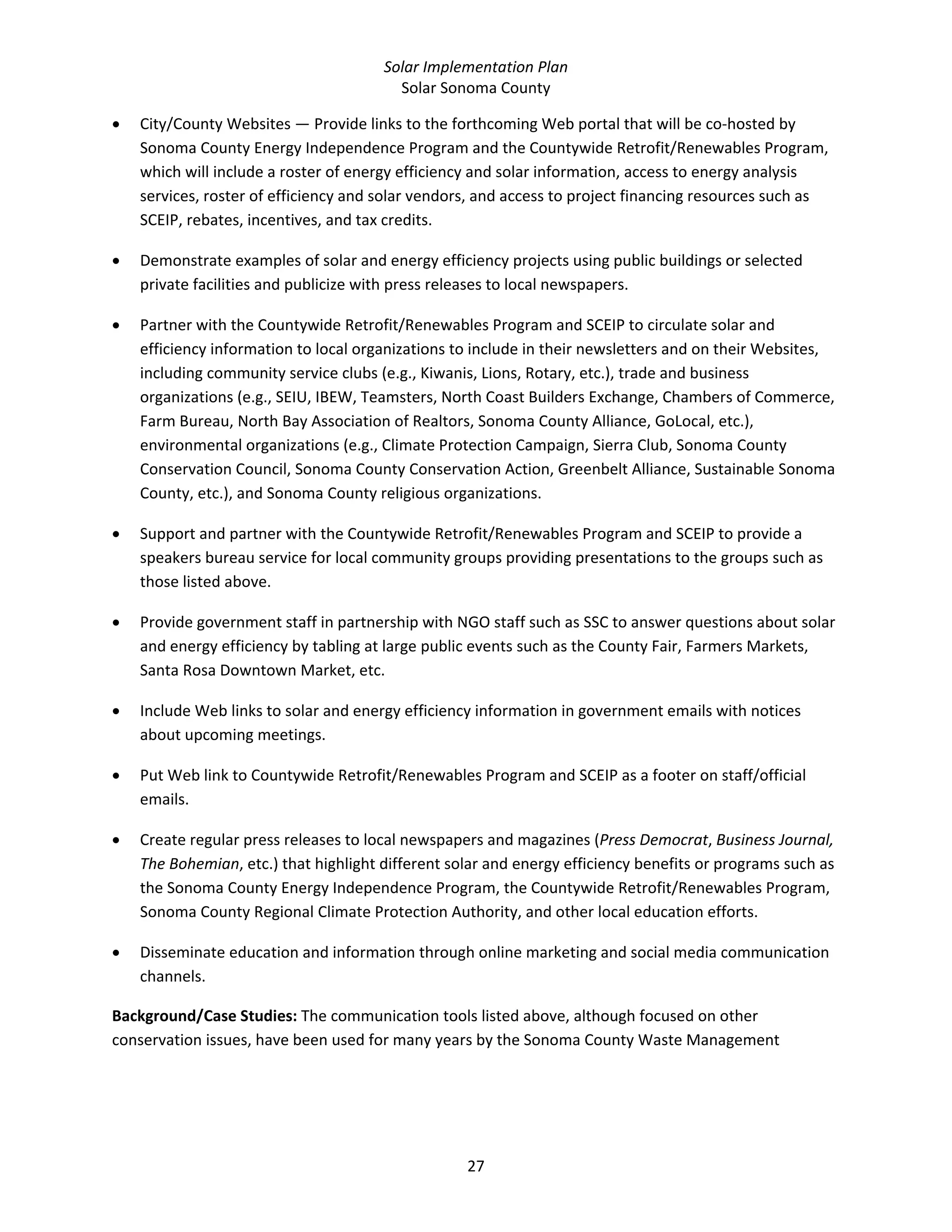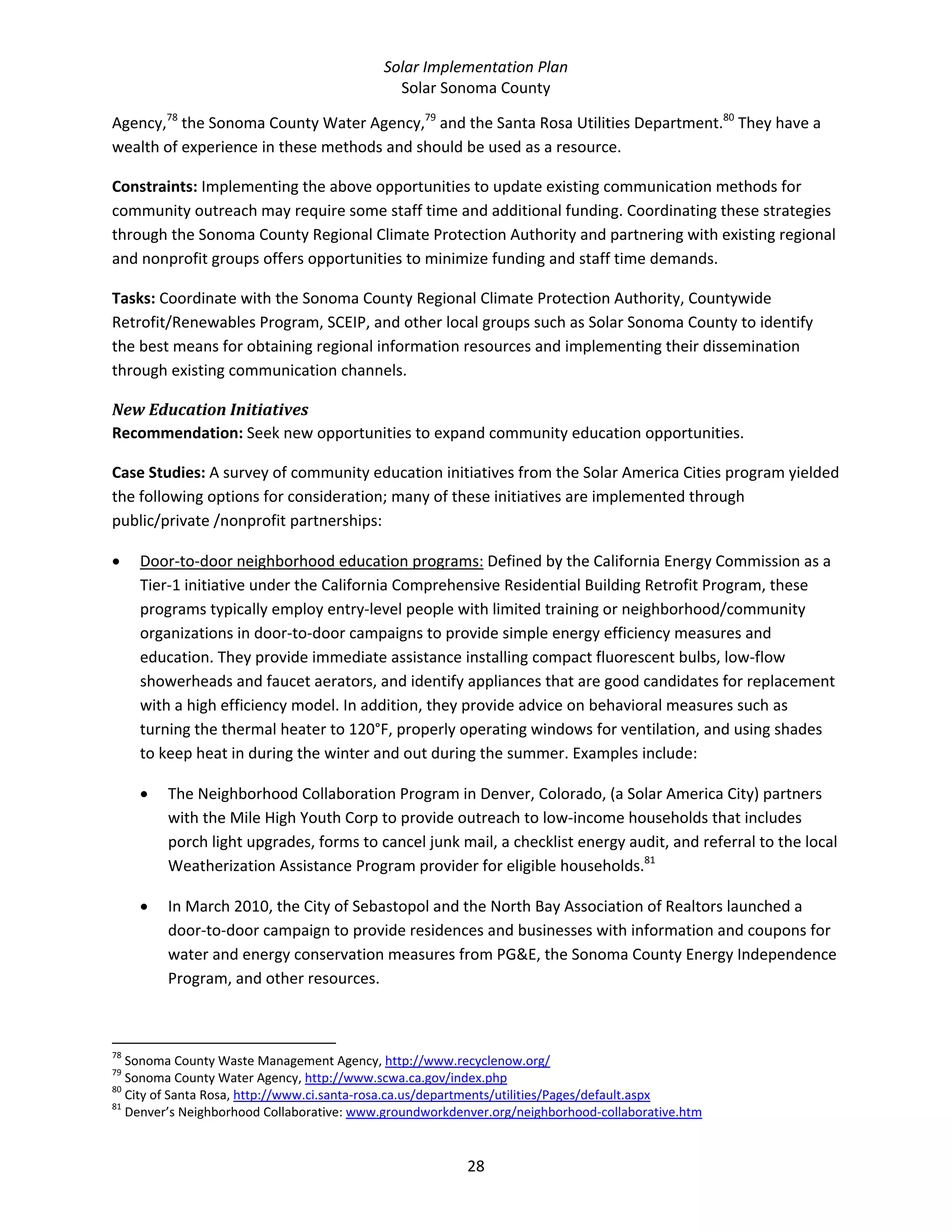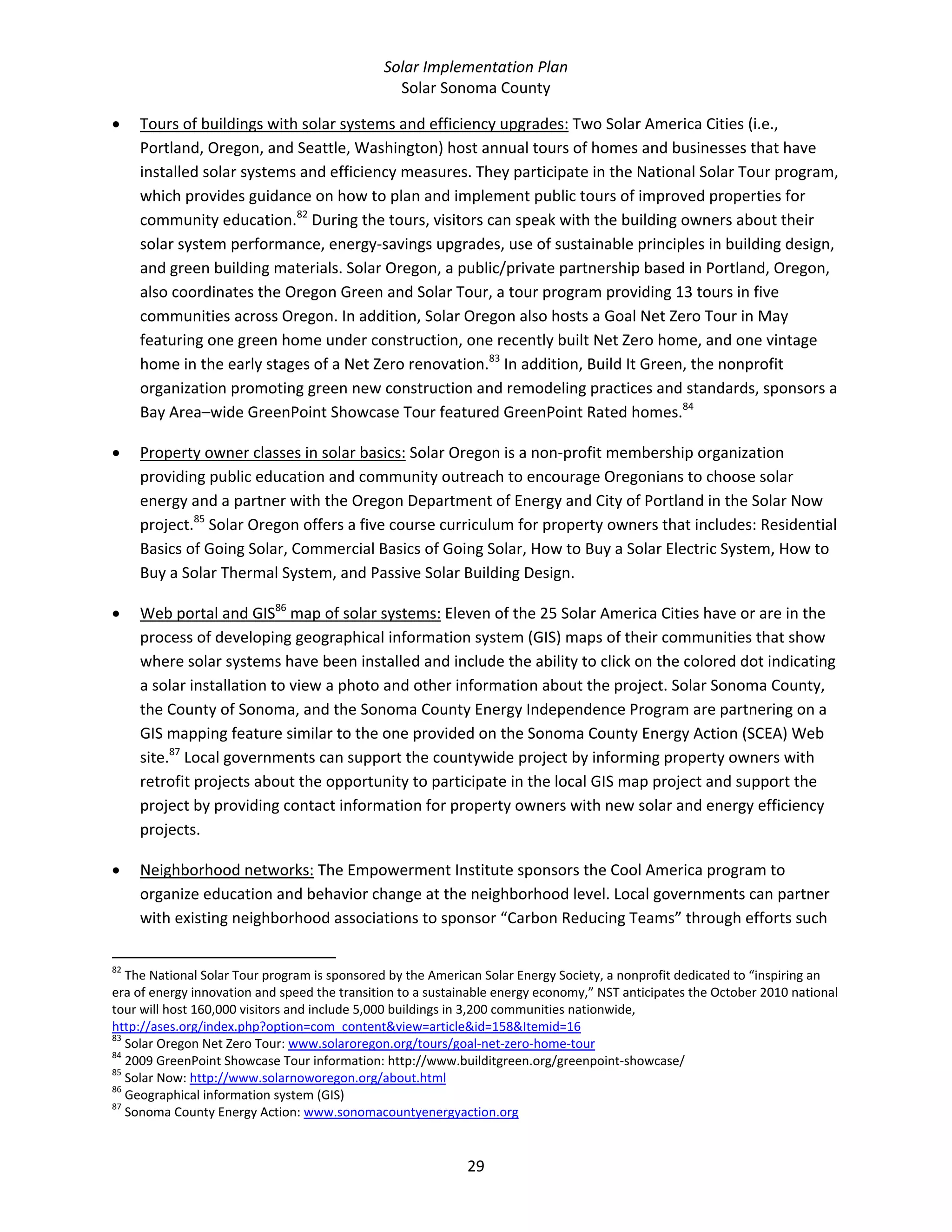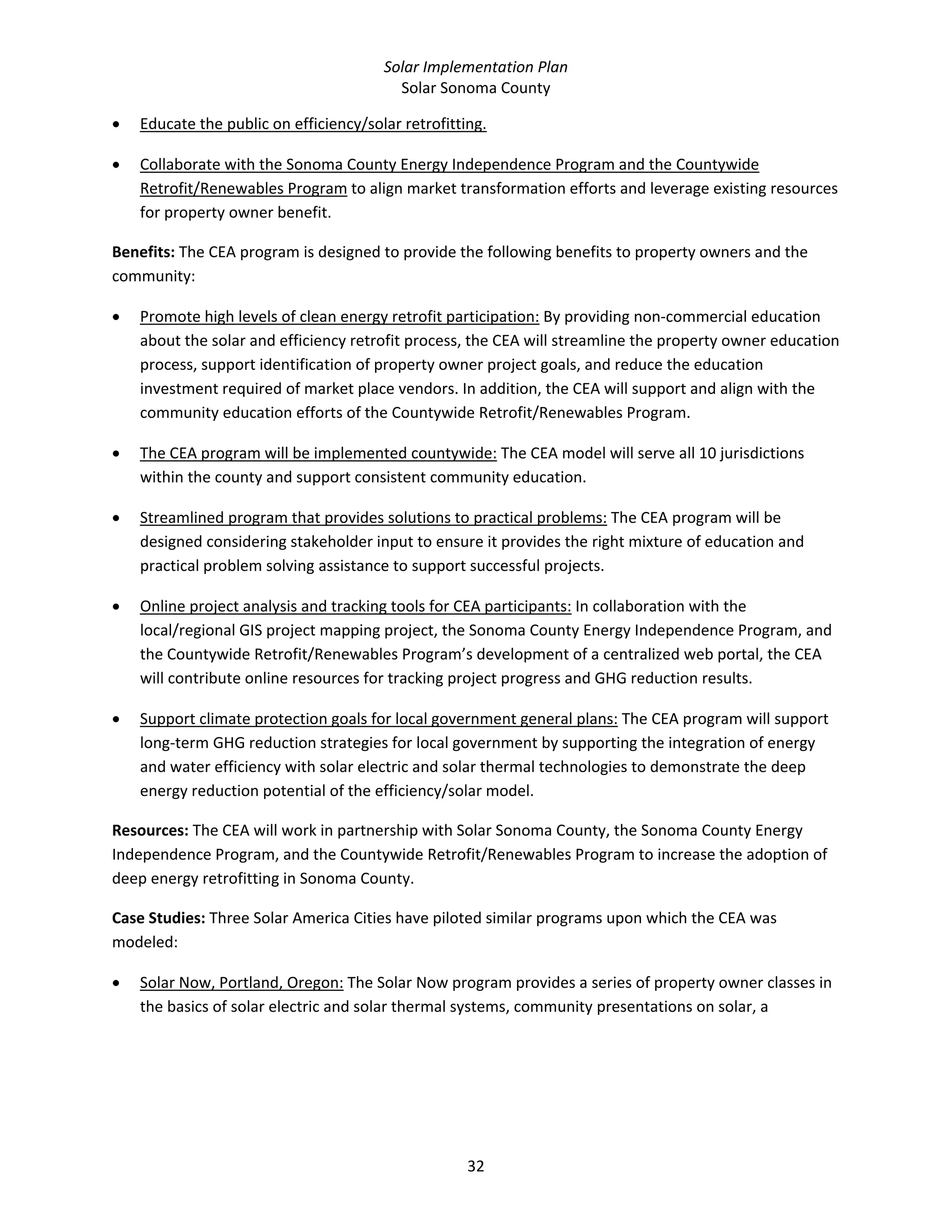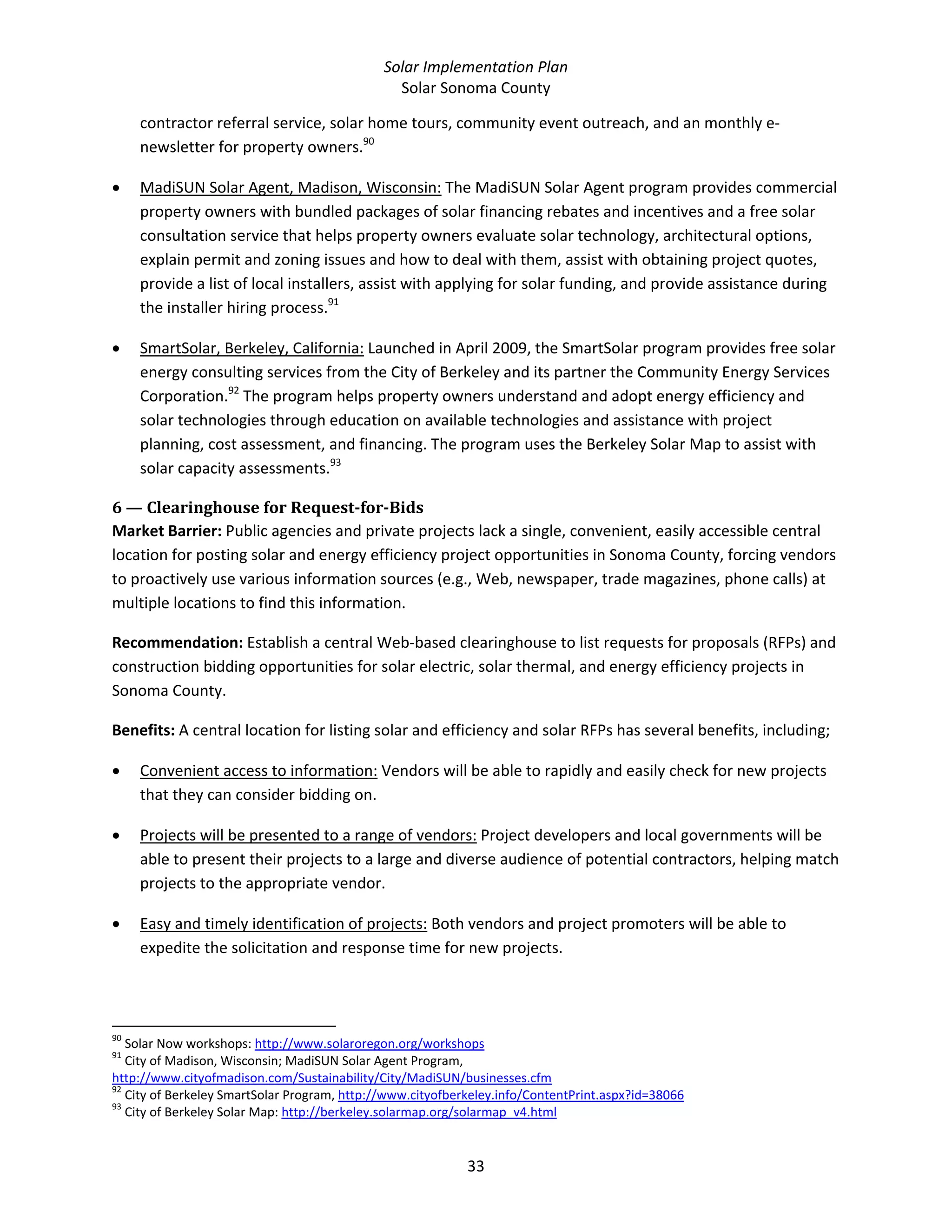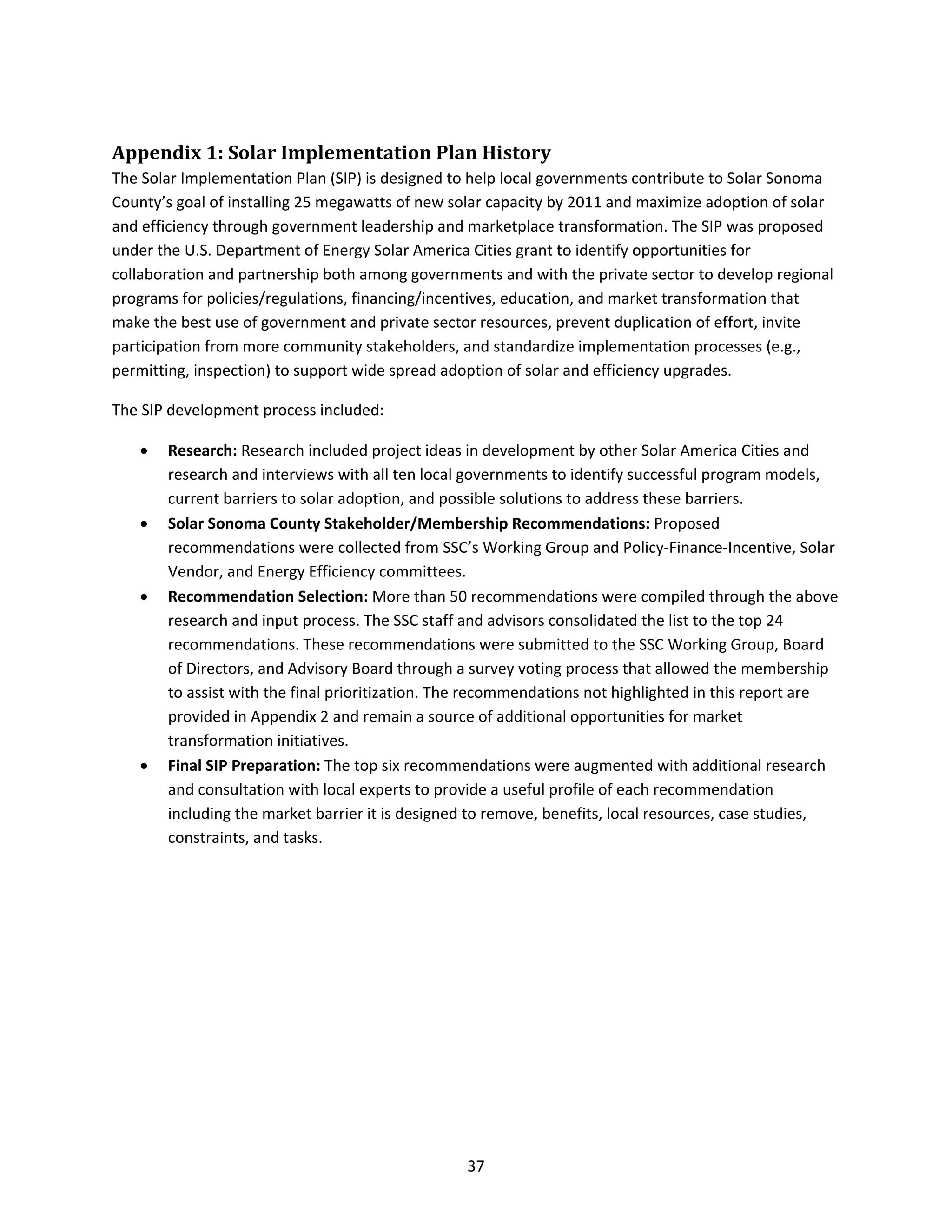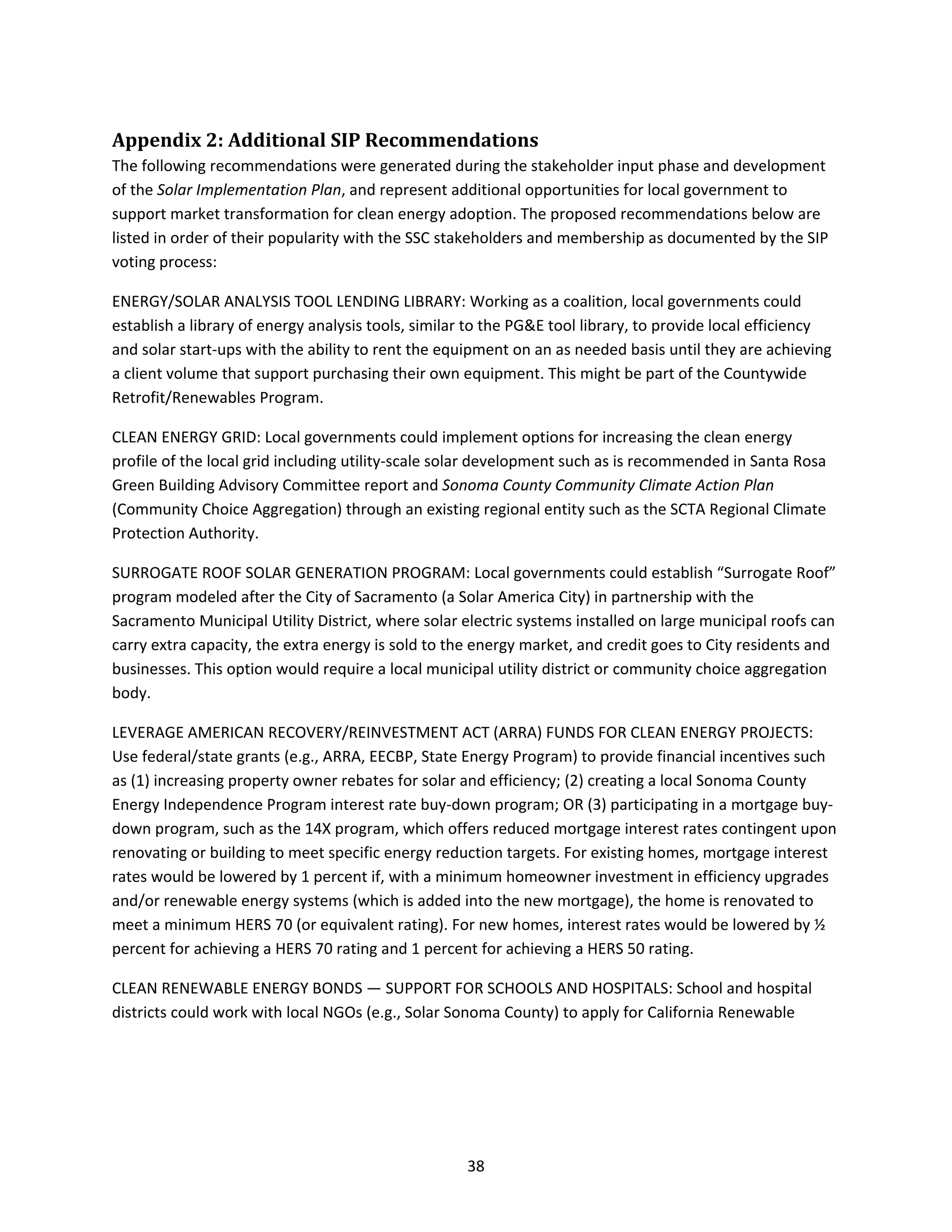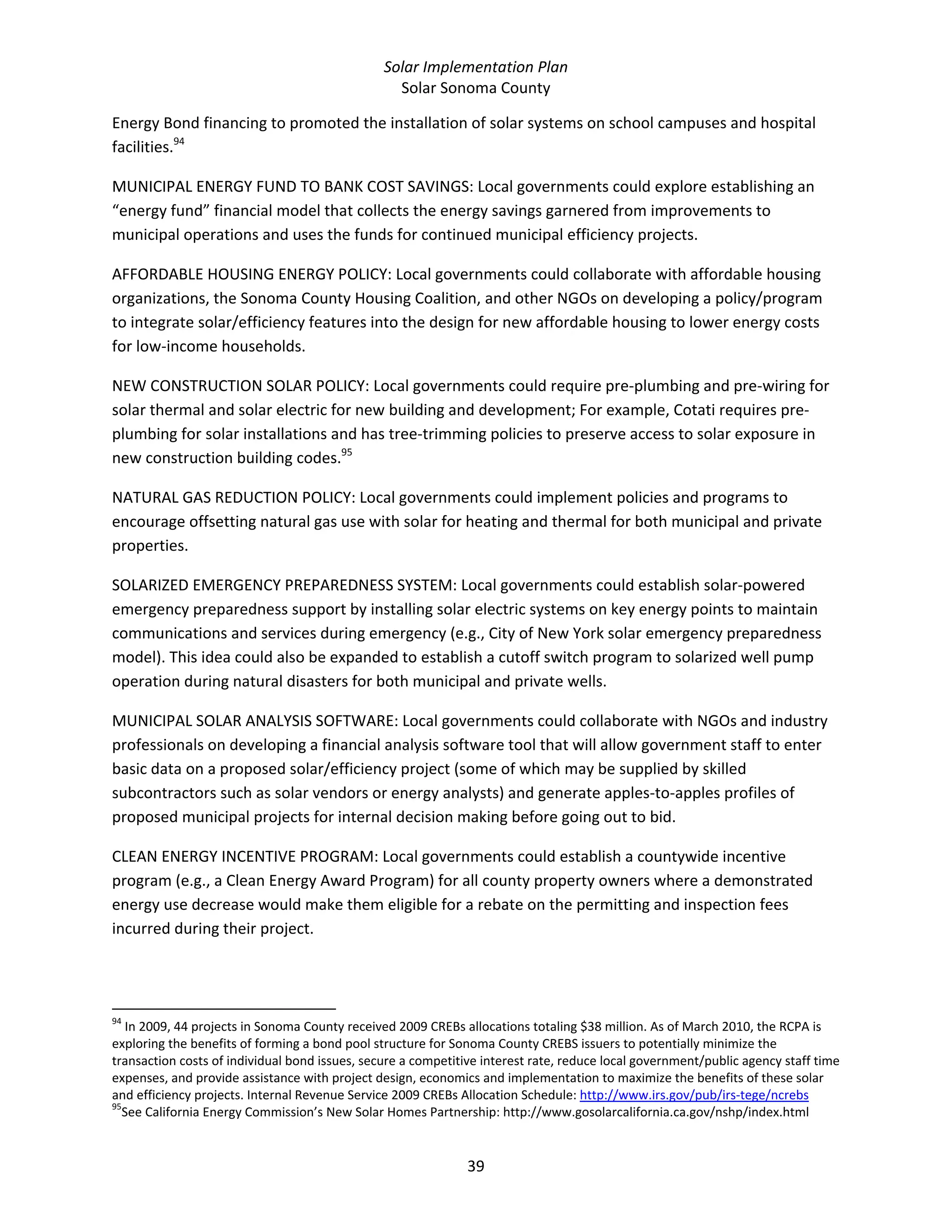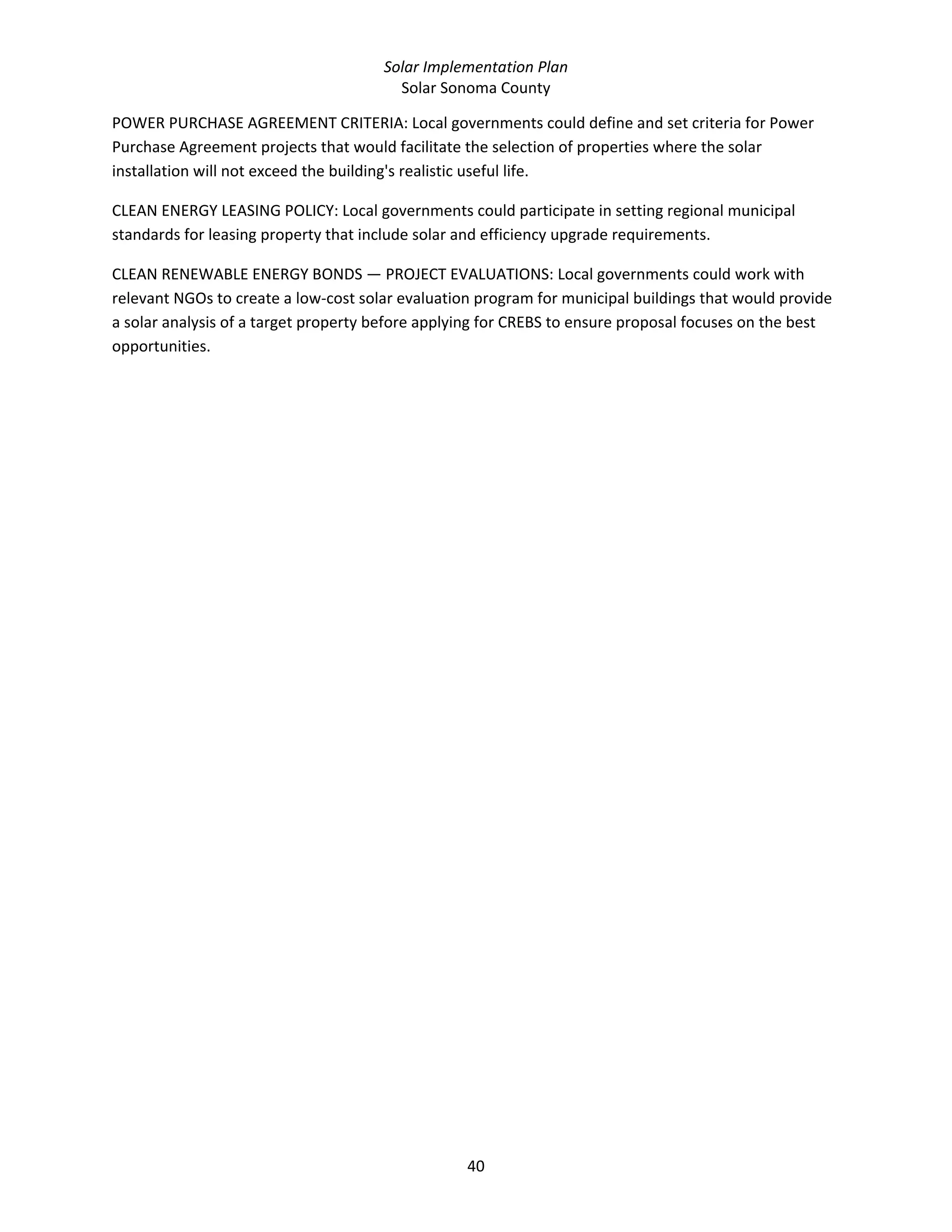This 3 sentence summary provides the high level information from the Solar Implementation Plan document:
The Solar Implementation Plan provides strategies to reduce barriers to solar energy and energy efficiency installations in Sonoma County. It aims to add 25 megawatts of new solar capacity by 2011 and transform the local market through regional collaboration on policies, financing, education, and public-private partnerships. The plan identifies differences in regulations, lack of education, and limited funding as key barriers and recommends actions like creating regional standards, leveraging existing funds, and training programs for officials and industry.
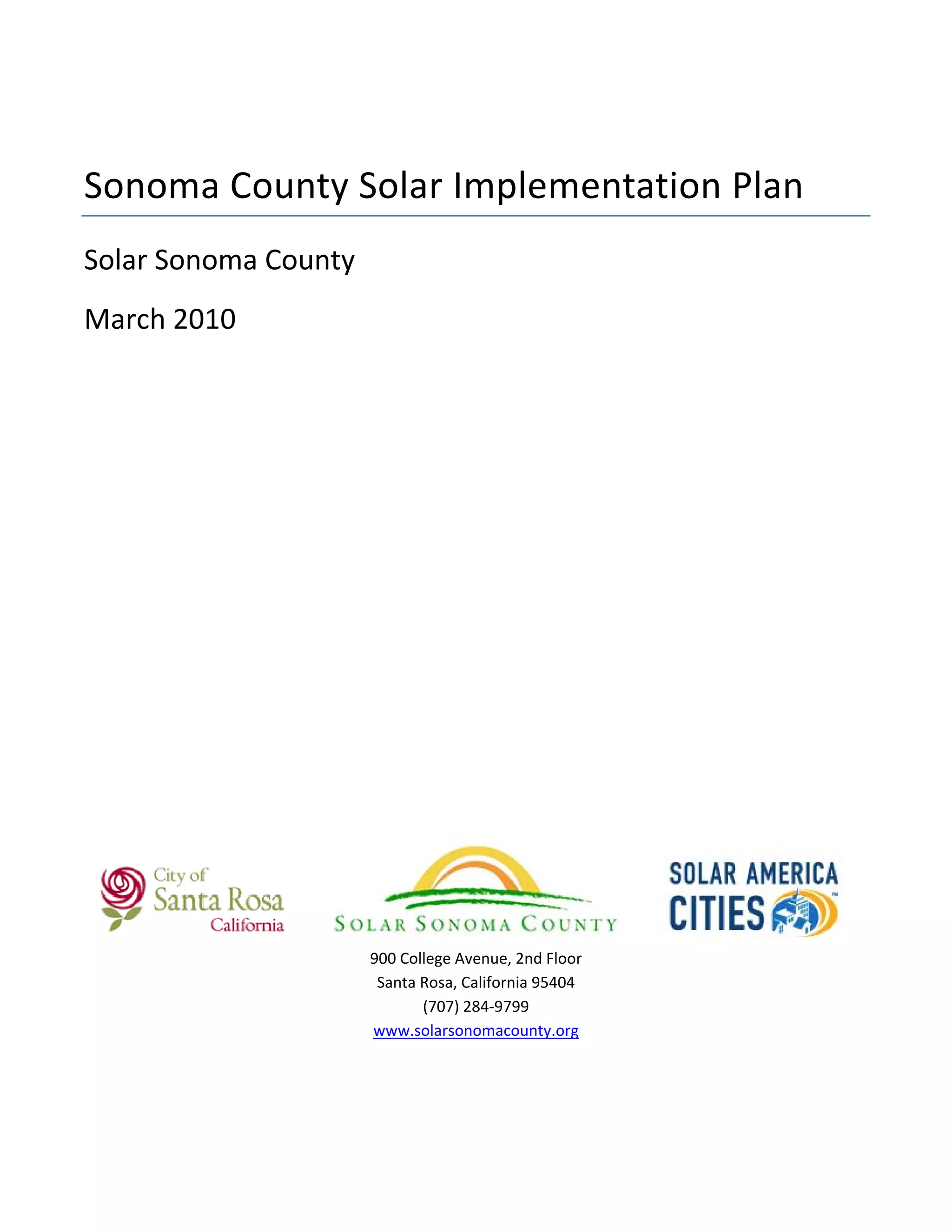

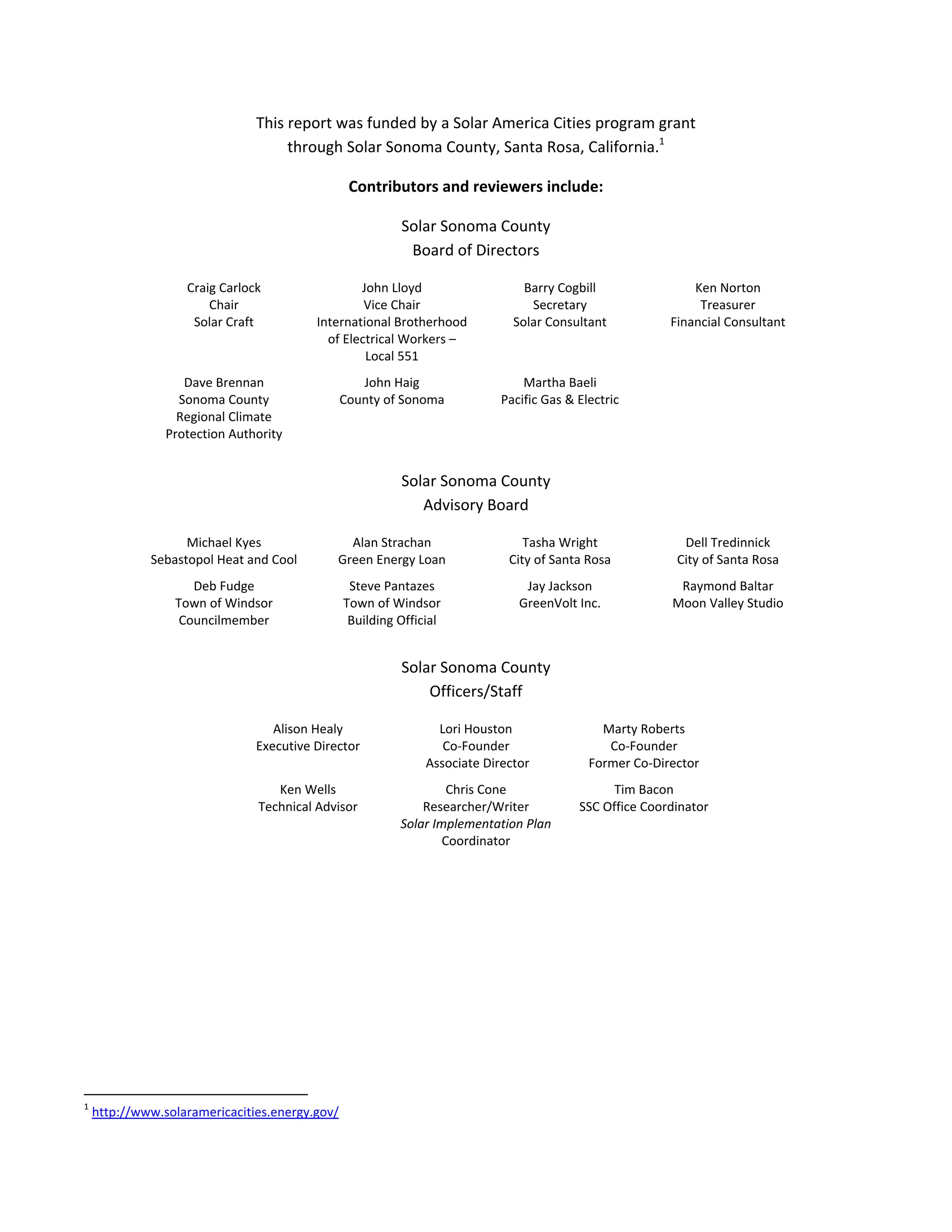
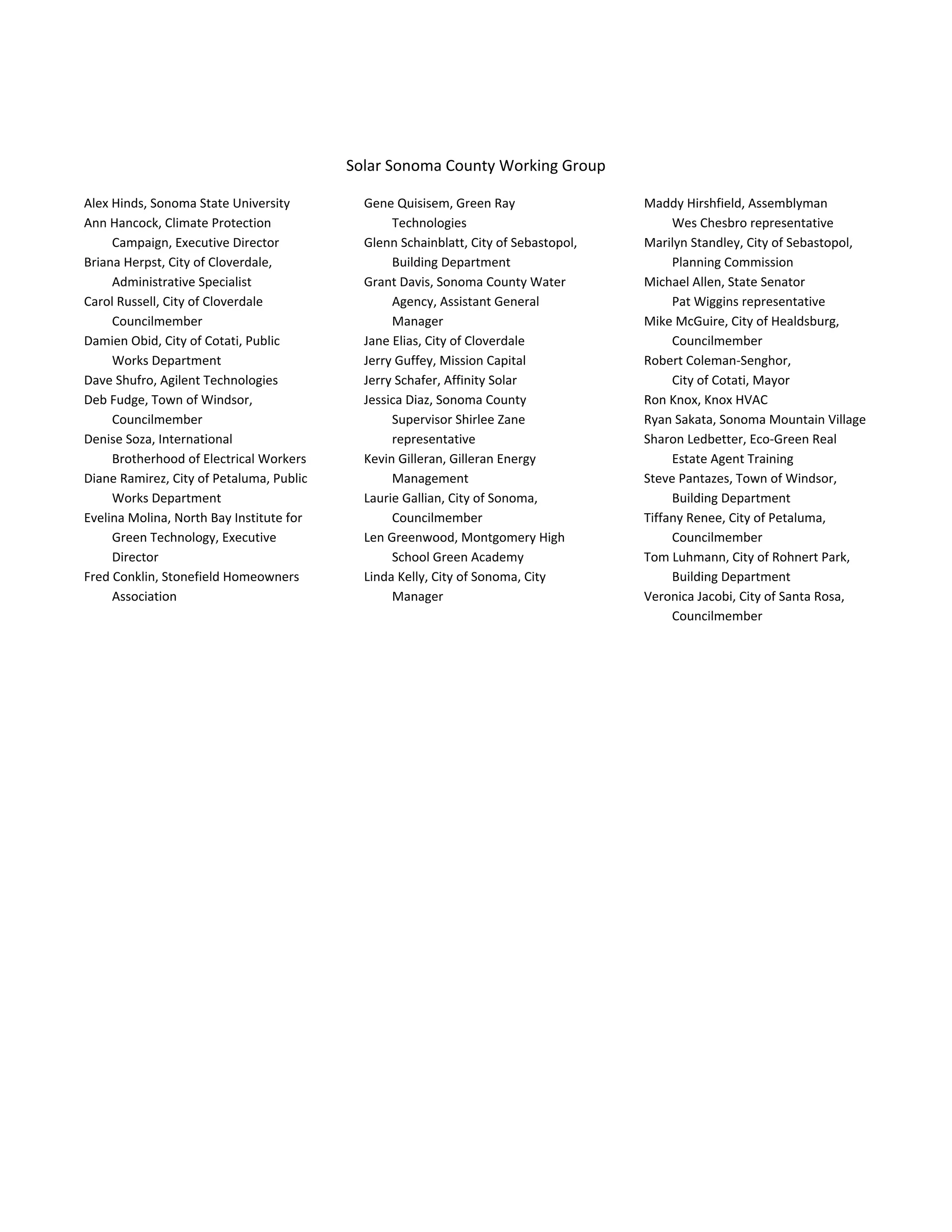
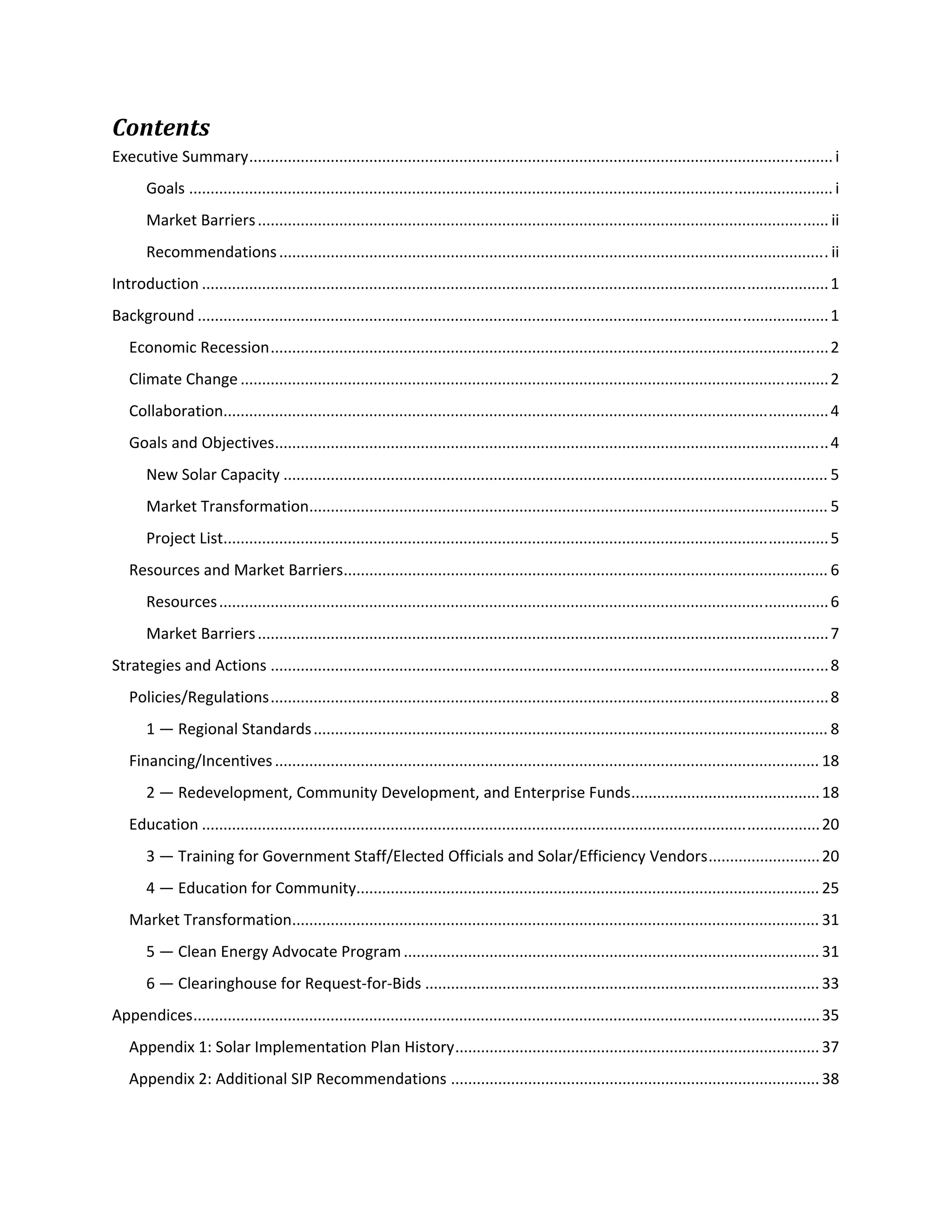

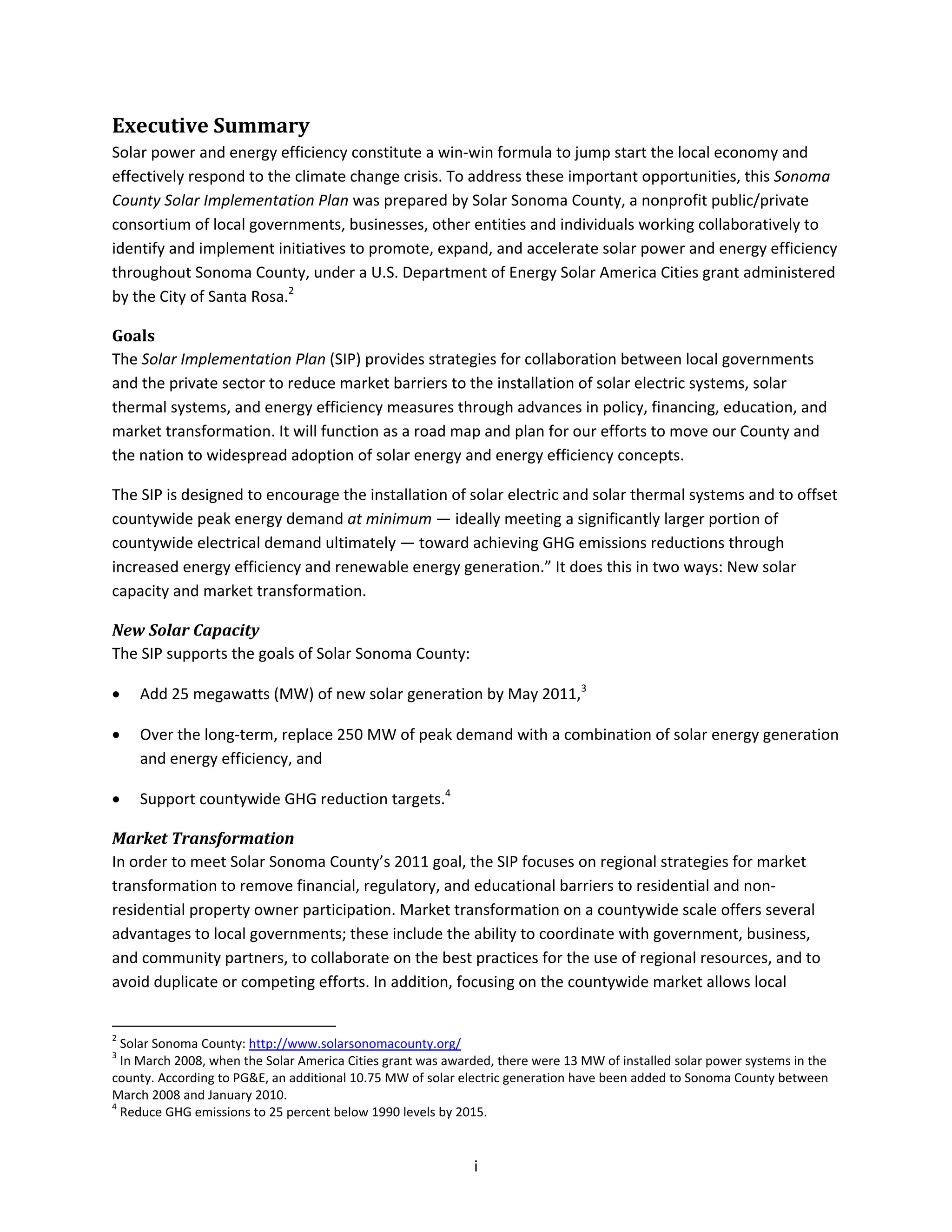



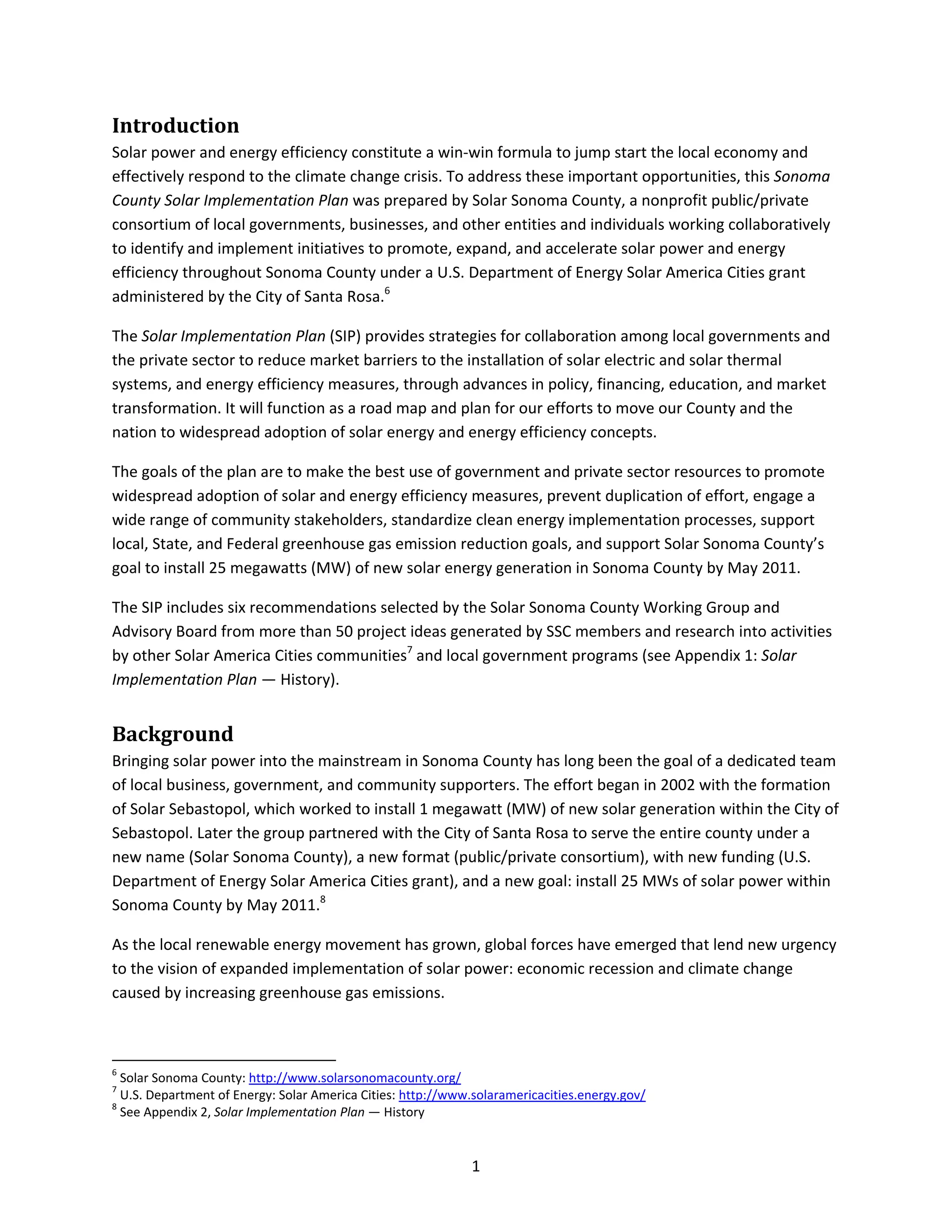
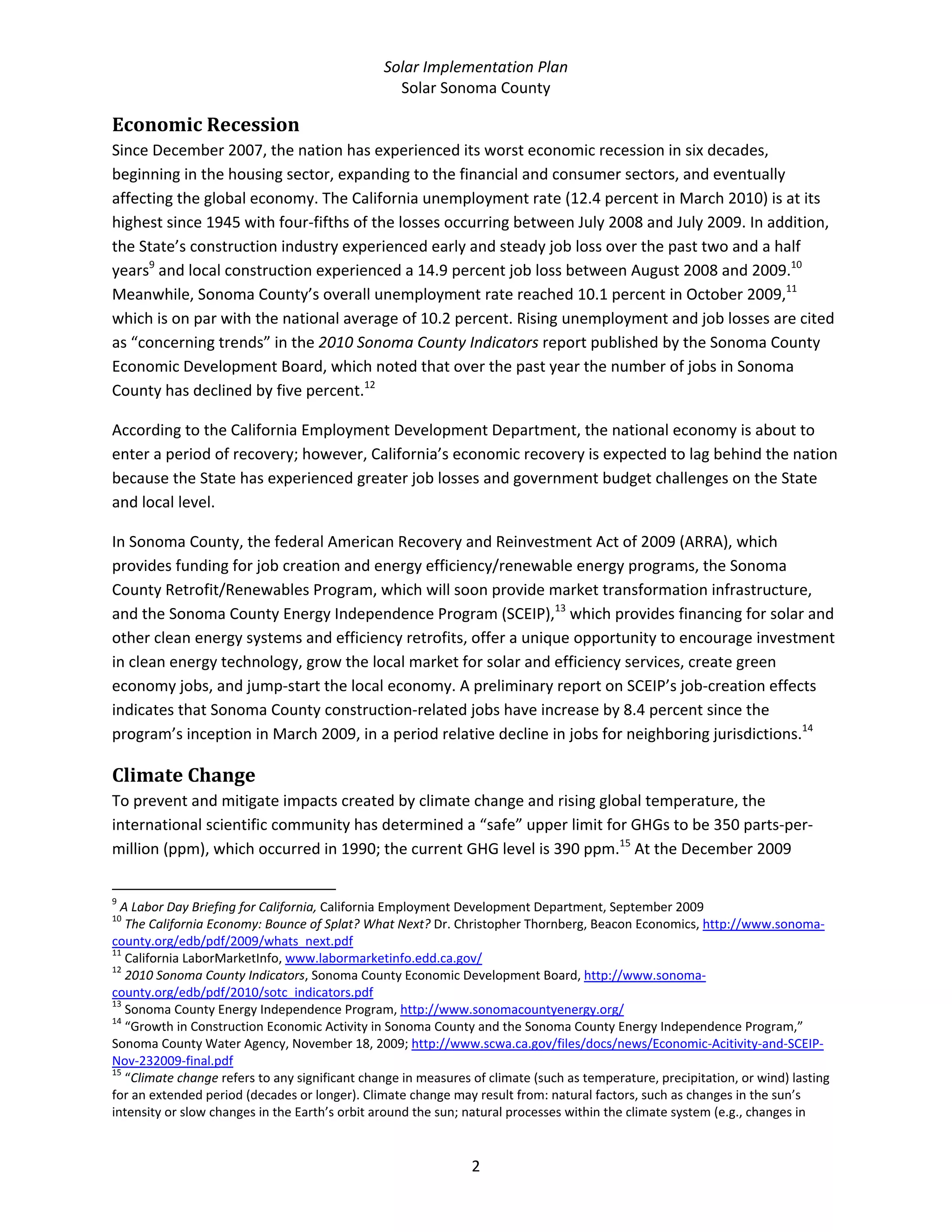
![Solar Implementation Plan
Solar Sonoma County
3
United Nations Climate Change Conference (COP15) in Copenhagen, Intergovernmental Panel on
Climate Change (IPCC) Director Dr. Rajendra Pachuari opened the conference by observing that “if [the
global] temperature increase is to be limited to between 2.0° and 2.4° Celsius, global emissions must
peak no later than 2015.”
Known as the scientific imperative, this global deadline illustrates how climate change, which affects
every aspect of the local community from food and energy security to economic stability to resource
availability, is redefining government’s role as protector of community health and safety. New policies
and mandates at every level of government call for the expansion of solar power and energy efficiency
initiatives:
• On the federal level, climate change is a factor in the American Recovery and Reinvestment Act of
2009 federal stimulus package,16
which includes funding for energy efficiency programs, and is the
primary focus of the American Clean Energy and Security Act,17
which is currently under
consideration in the U.S. Senate and includes provisions for increasing solar energy, setting energy
efficiency benchmarks, setting GHG reduction targets, and transitioning to a clean energy economy.
• On the state level, Assembly Bill 32 — Global Warming Solutions Act of 2006,18
which mandates
state GHG‐reduction targets (1990 levels by 2020; 80 percent below 1990 levels by 2050), opened
the door for a series of new laws focused on reducing GHG emissions and transforming the market
for clean energy services, including local government financing for solar and energy efficiency
projects under Assembly Bill 811.19
Assembly Bill 474 expanded the scope of AB 811 to include water
conservation measures, augmenting that statute.20
Senate Bill 375 requires the California Air
Resources Board to set regional greenhouse gas reduction targets for automobile/light truck
emissions and develop “sustainable community strategies” for land use planning to reduce the
urban sprawl that leads to long commutes and increasing vehicle emissions.21
• On the local level, climate change has spurred an unprecedented level of regional collaboration
between governments, business, and the community. Since 2001, the Climate Protection Campaign
(CPC) has facilitated countywide implementation of the International Council for Local
Environmental Initiatives (ICLEI) five‐step climate‐awareness campaign that fosters local
collaboration to establish a GHG emissions baseline, set a reduction target, develop a local climate
action plan, implement the action plan, and monitor the results. Most recently, the Sonoma County
Transportation Authority formed the Sonoma County Regional Climate Protection Agency (RCPA),
the first agency of its kind in the State, to address issues of regional and local collaboration on
climate issues.
ocean circulation); or human activities that change the atmosphere’s composition (e.g., through burning fossil fuels) and the
land surface (e.g., deforestation, reforestation, urbanization, desertification, etc.),” U.S. Environmental Protection Agency,
http://www.epa.gov/climatechange/basicinfo.html
16
http://www.govtrack.us/congress/bill.xpd?bill=h111‐1&tab=summary
17
http://www.govtrack.us/congress/bill.xpd?bill=h111‐2454&tab=summary
18
http://www.arb.ca.gov/cc/ab32/ab32.htm
19
http://info.sen.ca.gov/pub/07‐08/bill/asm/ab_0801‐0850/ab_811_bill_20080721_chaptered.pdf
20
http://info.sen.ca.gov/pub/09‐10/bill/asm/ab_0451‐0500/ab_474_bill_20091011_chaptered.pdf
21
http://info.sen.ca.gov/pub/09‐10/bill/sen/sb_0351‐0400/sb_375_bill_20090414_amended_sen_v98.pdf](https://image.slidesharecdn.com/67564693-6995-411b-8fbd-6743c9db593e-150609204911-lva1-app6891/75/solar_implementation_plan_final-05-10-10-13-2048.jpg)
![Solar Implementation Plan
Solar Sonoma County
4
Collaboration
Sonoma County governments have set several national precedents for regional collaboration. The first
collaborations arose as part of the ICLEI program under which all ten local governments committed to
reducing GHG emissions (2002), determined an emissions baseline for their respective municipal
operations (2003), determined a countywide baseline for total GHG emissions (2004), set a countywide
GHG reduction target (2005) — 25 percent below 1990 levels by 2015 — and supported the
development of the Sonoma County Community Climate Action Plan¸ which was published by the CPC in
2008.22
All 10 local governments expanded their regional collaboration in 2008–2009 by participating in:
• Solar Sonoma County, a 501c3 nonprofit public/private consortium Working Group consisting of
representatives from all ten local governments, business, community, and energy efficiency and
renewable energy industries to explore opportunities for collaboration to promote the installation
of solar technology and systems and energy efficiency measures , and overall market
transformation;23
• Sonoma County Regional Climate Protection Authority, established in 2009 to improve inter‐agency
and community collaboration and coordinate government and community initiatives for climate
protection;24
• Sonoma County Energy Independence Program (SCEIP), (the first comprehensive and completely
integrated countywide Property‐Assessed‐Clean‐Energy [PACE] financing program in the nation)
created by the County of Sonoma to provide property tax assessment financing for solar and energy
efficiency projects using Assembly Bill 811;25
and
• Sonoma County Retrofit/Renewables Program, forthcoming in spring 2010, was initiated to provide
residential and commercial property owners with one‐stop access to energy analysis, certified
vendors, and a financing package for solar and energy efficiency retrofit projects, working in
collaboration with SCEIP and leveraging that existing resource.26
Goals and Objectives
The Solar Implementation Plan (SIP) is designed to build on existing regional collaborations to encourage
the installation of solar electric and solar thermal systems, offset peak energy demand through
renewable energy generation, and reduce GHG emissions through energy efficiency.
22
Sonoma County Community Climate Action Plan, Climate Protection Campaign, 2008; http://www.coolplan.org
23
Solar Sonoma County, http://www.solarsonomacounty.org
24
Sonoma County Regional Climate Protection Authority, http://www.sctainfo.org/rcpa.htm
25
Sonoma County Energy Independence Program, http://www.sonomacountyenergy.org
26
Sonoma County Retrofit/Renewables Program, Sonoma County Regional Climate Protection Authority,
http://www.sctainfo.org/rcpa.htm](https://image.slidesharecdn.com/67564693-6995-411b-8fbd-6743c9db593e-150609204911-lva1-app6891/75/solar_implementation_plan_final-05-10-10-14-2048.jpg)
